Week One
No spring break going on here!
School is in session and the garden is bustin' at the seams!
Most of the day was overcast and temperatures were in the 70's.
Perfect weather to get a few things done.
We first checked on the status of the garden.
Peaville is still producing lots of delicious morsels.
We should be able to pick for quite some time.
The beets are vying for space in the pots.
Guess it's time to pick a few to take home!
Such sacrifices must be made for the benefit of the garden.
;0D
The tomatoes we worked on two weeks ago are growing stronger.
These crops, which were planted earlier in the season,
will soon be caged to ensure they have proper support.
Lynn's goal is to have tomatoes year-round.
Imagine that!
Scallions were harvested for the farmer's market and they practically sold out.
No surprise there.
We are scheduled to plant a new row next weekend.
The Brussels sprouts will be harvested as is
and the plants will be removed from the pots.
Lynn feels that they won't grow to their potential
and he plans to try them again in the fall
when weather conditions are more favorable.
I can't tell you how much we've been enjoying the broccoli tips.
They are so tender and sweet,
you just know they have to be good for you!
Collards are selling out at the market as well.
The arugula is bolting, but hasn't yet become bitter.
This batch under the shade is faring well enough that
leaves can still be harvested and enjoyed.
Some of the lettuce is going to seed as well...
but thankfully, there is more to be found elsewhere in the garden.
The New Zealand spinach is just plain tuckered out.
This will be taken out of the pots
to make room for new plants, possibly okra.
This bay of spinach is younger and looking pretty good.
After Faye and I finished making soil,
(that process can be seen here),
the leeks needed to be transplanted.
I'm more than happy to oblige!
As evident by the rootball,
these beauties will relish the extra space to spread out.
Depending on the size of the pot,
we transplanted 3 or 4 leeks.
These are a wonderful substitute for onions or garlic,
for those who enjoy a subtler flavor.
As the leeks grow taller,
soil is added to the pots.
This ensures an abundance of the tender white portion.
Even if I've just eaten before I arrive,
I always get hungry seeing this array.
As well as tending a tremendous vegetable garden,
Faye and Lynn are the stalwart stewards for a colossal collection
of impressive trees and unusual ornamentals.
 |
| Golden Shower Tree |
The photos of this hickory tree
really don't do it justice.
The color is unbelievable.
It's one of the resident squirrels' favorite hang-outs.
This eucalyptus tree was knocked over during the hurricanes of 2004.
It survived and you can see the branches growing out of the fallen limbs.
 |
| bridal wreath spirea |
 |
| Regina Iris |
Spring came in like gangbusters!
We look forward to savoring the season
with two very dear friends
who have forever changed my life.
Blessings be...
~~~~~~~~~~~~
Spring Series
Week Two
Spring has sprung at
Farm School.
This week found us enjoying a cool, sunny day
that motivated us to tackle a few vital chores.
Our status check on the garden always starts the day.
The kale is coming to the end of its run.
It has started to decline with the warmer temperatures,
but will be harvested for market as long as possible.
Faye and Lynn have been sampling the banana peppers
that have continued to produce.
The okra that was started a few weeks ago is growing well.
As the cool weather crops wane,
there are plans to sow many more rows of this heat lover.
The kohlrabi is just about perfect for pickin'.
Lynn told me that up north, these are one of the fastest growing crops.
With the fluctuation in temperatures here,
they take a bit longer.
Tomato Town is exploding with goodies!
These are the Celebrity variety
and they will be gracing our table very soon.
Some are already starting to turn color.
Some of the Sweet Millions had to be pulled out due to spider mite infestation.
Hopefully, this row will not be affected.
The seed from the arugula that has bolted is being saved.
Fortunately, the lettuce is still going strong,
but with temperatures hitting the mid-80's later in the week,
its days are numbered.
Our first task was to plant another row of scallion sets.
The sets were sorted, placing the smaller ones to the side for planting today.
We also pulled out any sets that were already sprouting.
These are just yearning to grow,
so they will be among the first to be planted.
Give 'em what they want and they'll repay you tenfold.
They will not be denied!
Any of the sets that seemed dry or rotten were tossed,
as they are not likely to produce a crop.
There weren't too many of those.
This little gem is just longing to kiss that dirt!
Lynn made the holes and then the set gets planted deep into the pot.
We featured the whole process here.

Another job that needed doin', was to sow some cucumber seeds.
We had attempted to grow them a few months back,
but conditions were not favorable and they just didn't do anything.
Lynn had already put up this fencing so that they have somewhere to climb.
The soil was scratched to loosen it up a bit,
as the composed soil mix was not used here.
This is one of the few crops that will be planted directly in the ground.
A shallow furrow was made...
and seeds were planted about every foot.
They were flagged so we know where to expect seedlings to pop up.
Another undertaking was to pull out 4 rows of sugar snap peas that were spent.
They weren't producing enough to warrant them staying,
and Lynn has plans to put another crop in its place.
He still has sugar snaps growing elsewhere in the garden.
Any weeds that were found were removed
while uprooting the plants from the containers.
The vines were pulled from back to front along the baling twine,
and then removed from the opening at the ends.
It's pretty doggone efficient.
Lynn's considering planting radishes here,
as they are a quick crop and sell well at the market.
Sometimes the pots need to be topped off with soil,
but it wasn't necessary here.
Lynn comes up with all kinds of cool adaptations around The Hill.
Here's a handy idea.
This path is used frequently by foot and golf cart
to access part of the garden.
As the hose needs to stay put,
he encased it in PVC pipe to aid in its longevity.
He plans to bury it just beneath the soil
to ensure it stays put.
These pots are filled with Lynn's soil mix
and are awaiting planting.
The screen wire on top keeps debris out until planting day.
Wouldya look at this glorious beet?
The end where Lynn cuts off the greens is a work of art.
They don't taste too bad, either!
This is a turkey oak tree.
The color is a vibrant green.
Anyone who has turkeys will recognize this.
The tree gets its name from the leaves
which resemble a turkey's foot.
We're enjoying the comfortable spring weather
and completing projects with ease.
Here's hoping that spring has made Her appearance in your garden.
*************
Spring Series
Week Three
The spring garden is hummin' right along here at
Farm School.
We had time to do a few things that have been
on Lynn's to-do list for quite some time.
The thyme is coming right along
and smells heavenly.
Lynn has started a few trays of Datura,
also known as Devil's Trumpet.
It's a gorgeous shade of violet.
You can read more about it here.
Tomato Town is enjoying the warmer temperatures
and the abundant sunshine we've had in the past week.
I stopped dead in my tracks when I spied these.
Oh.My.Stars.
The crops are absolutely LOADED.
Am I the only one drooling here?
Last weekend, we planted a row of scallion sets.
These amazing crops w-i-l-l themselves to climb through 10 inches of soil
to celebrate in the sunshine.
We'll show you the unique harvesting technique soon.
The banana peppers are producing well enough
that there may be some for the farmer's market this weekend.
The Swiss Chard is bolting now,
and the seed will be saved for future sowing.
Veggies as far as the eye can see.
My beloved Red Salad Bowl lettuce is spent.
In another area, there are plants faring better, but
we won't have much longer to enjoy this tasty treat.
The Buttercrunch is also done for the season.
The Red Annapolis has been slow growing,
but worth the wait.
It's so tender and sweet, it practically melts in your mouth.
Lynn has another red variety in mind that is supposed to be more heat tolerant.
We hope to feature that soon.
Some of the cukes we planted last week are starting to pop up.
The Brussels sprouts were harvested last week.
Lynn has plans for the leaves.
He cuts off the top portion of the plant,
wraps it in bacon and cooks it.
He claims it's to die for.
I think I'll take his word for it.
;0P
Lynn had obtained these pots from someone on Craig's List
who was downsizing her garden.
He didn't really need the dirt, just the pots.
We got to work clearing out some of the debris.
The dirt was dumped onto the groundcloth
and these two forks were used to sift through the roots.
The dirt was used for transplanting these Red Caribbean Papaya.
The pots were set aside for another day's use.
Ah, now doesn't that feel better?
This sweet lil' preying mantis was found trying to dive back under the dirt.
These beneficial insects are a boon to the garden.
This glorious specimen is the desert rose.
Lynn decided to pot up the shoots that have
grown at the base of the main plant.
These root easily, so with a little shade and TLC,
they'll be a wonderful addition to someone's garden.
Faye and Lynn sell both produce and ornamentals
at the Lake Wales Farmer's Market twice a month.
Our next task required a sharp spade.
Lynn has the right tool for the job.
The solid metal spade here on the right is at least 75 years old,
and like most things of this vintage, well made.
It was just the thing to dig up these two loquat trees
that had found a home at the base of a palm.
With a bit of hard work,
they were potted up and watered in well.
One is already promised to someone.
Lynn has another tagged for my garden.
Yippeee!
This native Fringe Tree is unlike anything I've ever seen.
The tufts of blooms are not only spectacular to behold,
the fragrance is something akin to a treat from a sweet shoppe.
Lynn thinks it smells like chocolate almond,
my vote was for vanilla.
Since we focus on the luscious vegetables and fruit most of the time,
it was delightful to learn a bit more about
the amazing array of ornamental plants and trees
that share their home here on The Hill.
Faye and Lynn are conscientious stewards of this land.
I can assure you, it's in the best of hands.
************
Spring Series
Week Four
The garden is at maximum capacity.
Every available inch is being used
to produce some delectable goodies.
Several of the bell peppers are starting to show some color.
A few rows down, the same variety is having some problems.
The mottled leaves show signs of distress.
Instead of trying to figure out what the problem is,
Lynn will most likely pull them out and replant another crop in the space.
For the first time, black-eyed peas are being grown.
Lynn was thrilled when every single seed germinated.
There are plans for more of this crop to be sown,
as it is tolerant of the summer heat and humidity.
The kohlrabi sold well at the market this weekend.
This is the root system from the pots where they were grown.
It was surprising to see how small it was,
considering the size of the plant.
The New Zealand spinach that was left to grow
is looking healthy and expanding.
Successive planting keeps customers happy.
When lettuce can no longer be grown
(we're getting close to that time),
this makes a wonderful alternative in a salad.
Along with some of Lynn's Celebrity tomatoes,
it's a dynamite combination.
Lynn decided to try to continue the lettuce crop,
as most of what he's grown has bolted.
The new crops will be grown in the shade
to give them a better chance at survival.
We transplanted about 20 seedlings.
Lynn has the most delicate touch when removing them from the cell packs.
He simply tilts it, gently pushes from the bottom,
and lets gravity do the rest.
We hope these will make it.
This is the Red Salad Bowl variety, my favorite.
There is another heat tolerant lettuce that is being tried.
We'll feature that variety soon.
We also took down 3 rows of spent sugar snap peas.
We replanted in the hopes that the shady area they are planted in
will help them produce for a few more months.
Fortunately, there are some that are just flowering,
so we are guaranteed some juicy goodness.
The scallion sets we planted a couple of weeks ago,
are coming along.
This is another plant that usually does better in the cooler temps,
but Lynn wanted to give it a go.
Here's a pot that needed to be harvested.
Lynn takes a metal maul and taps the side of the pot.
Once the soil is loose,
Faye and Lynn work together to remove the entire plant from the pot.
The soil is collected underneath on a piece of ground cloth,
so that it can be reused.
Scallions can just be harvested as orders come in,
or readied for the farmer's market.
Because the scallions are planted so deeply,
there is an abundance of the white section of the crop.
Faye cleans the scallions to enhance the presentation.
The outer skin is gently peeled off,
and the roots are snipped.
She divides them according to diameter size,
and then combines a few of each different size in bundles.
The beets have been wonderfully sweet,
but the season for them is almost over.
Spring is the time for blooming amaryllis.
A bushel of juicing oranges was taken home for a friend.
Several orchids are blooming as well.
There's always something good happening here.
Not the least of which is food for this gardener's soul.
************
Spring Series
Week Five
It's so satisfying getting a few things done on The Hill.
It's been over a year since we began this endeavor,
and the learning has just begun.
Farm School is a blessing indeed.
************
Spring Series
Week Six
Our status check found the garden slowing down
with the rise in temperature.
In the past few weeks, the five varieties of lettuce had bolted.
Lynn has a couple of new heat-resistant varieties started in seed trays.
These are the Red Sails and Red Fire seeds germinating.
An almost perfect germination rate on the eggplant
ensures that we'll be enjoying the fruit of the delicious Epic crops soon.
Elsewhere in the garden, some crops are done for the season.
This Red Russian kale has been devoured by aphids.
The plants will be pulled out of their pots
and then replanted with okra.
The Dinosaur kale is faring a bit better,
but this cool weather lover will probably not be producing much longer.
The good news is that Tomato Town is as happy as
a bumblebee in a sunflower patch.
The plants are loaded with fruit,
and so far, not much sign of bug trouble.
Can't wait for that first grilled cheese and tomato sandwich!
The okra is also diggin' the heat.
Lynn shared that once these get going,
they sometimes must be harvested twice a day,
as they grow so prolifically.
If you've never tried pickled okra, trust me, you need to.
The black-eyed peas continue to amaze.
The germination rate was stellar
and they just look better each week.
Lynn thinned the established crops out a bit this past week,
from 8 plants to a pot down to five or six.
This is a new crop on The Hill
and Lynn isn't afraid to experiment with his methods.
The parsley plants are lush and vibrant.
This versatile herb is used in so many dishes
The last sowing of sugar snap peas is thus far looking good.
We aren't sure how well they will do with the summer-like weather,
but keeping them in the shade should help.
The cucumbers were reseeded recently,
as the first sowing didn't do much.
Lynn adheres to the old adage,
"try, try again".

Here's how the lettuce transplants we worked on last weekend looked.
In just a week, the Red Salad Bowl variety is making progress.
Lynn is utilizing the natural shade of overhead tree limbs to combat the heat,
as well as a protective covering to keep the tender seedlings safe from strong wind and rain.
We worked on filling some of these pots with
the dirt that was recently acquired from a seller on Craig's List.
We sifted through any roots or debris in the mound of dirt,
and then refilled the pots.

You can see the process we utilized here.
This dirt will be amended with peat moss
and possibly perlite to make it more viable.
It doesn't meet Lynn's standards for planting,
as it had difficulty absorbing moisture.
This baby walking stick was found in one of the pots where we were working.
It's such a treat discovering friendly critters!
Another task was to remove a couple of rows of spent sugar snap peas
to make room for more black-eyed peas.
The seeds were sown an inch deep about every 2 inches across the pot.
The germination rate with these babies is almost 100 percent.
The broccoli is slowing down dramatically.
We picked some tips for my order.
See the little eggs on the dill near my thumb?
Those are black swallowtail caterpillar eggs.
That means that soon we'll be bringing cats home
to give away on Craig's List.
We love teaching others about the life cycle of this amazing butterfly.
Another fantastic and productive day in paradise.
There is so much to learn and precious little time.
No matter, I'll take what I can get.
Farm School is an exercise in gratitude.
Spring Series
Week Three
The spring garden is hummin' right along here at
Farm School.
We had time to do a few things that have been
on Lynn's to-do list for quite some time.
The thyme is coming right along
and smells heavenly.
Lynn has started a few trays of Datura,
also known as Devil's Trumpet.
It's a gorgeous shade of violet.
You can read more about it here.
Tomato Town is enjoying the warmer temperatures
and the abundant sunshine we've had in the past week.
I stopped dead in my tracks when I spied these.
Oh.My.Stars.
The crops are absolutely LOADED.
Am I the only one drooling here?
Last weekend, we planted a row of scallion sets.
These amazing crops w-i-l-l themselves to climb through 10 inches of soil
to celebrate in the sunshine.
We'll show you the unique harvesting technique soon.
The banana peppers are producing well enough
that there may be some for the farmer's market this weekend.
The Swiss Chard is bolting now,
and the seed will be saved for future sowing.
Veggies as far as the eye can see.
My beloved Red Salad Bowl lettuce is spent.
In another area, there are plants faring better, but
we won't have much longer to enjoy this tasty treat.
The Buttercrunch is also done for the season.
The Red Annapolis has been slow growing,
but worth the wait.
It's so tender and sweet, it practically melts in your mouth.
Lynn has another red variety in mind that is supposed to be more heat tolerant.
We hope to feature that soon.
Some of the cukes we planted last week are starting to pop up.
The Brussels sprouts were harvested last week.
Lynn has plans for the leaves.
He cuts off the top portion of the plant,
wraps it in bacon and cooks it.
He claims it's to die for.
I think I'll take his word for it.
;0P
Lynn had obtained these pots from someone on Craig's List
who was downsizing her garden.
He didn't really need the dirt, just the pots.
We got to work clearing out some of the debris.
The dirt was dumped onto the groundcloth
and these two forks were used to sift through the roots.
The dirt was used for transplanting these Red Caribbean Papaya.
The pots were set aside for another day's use.
Ah, now doesn't that feel better?
This sweet lil' preying mantis was found trying to dive back under the dirt.
These beneficial insects are a boon to the garden.
This glorious specimen is the desert rose.
Lynn decided to pot up the shoots that have
grown at the base of the main plant.
These root easily, so with a little shade and TLC,
they'll be a wonderful addition to someone's garden.
Faye and Lynn sell both produce and ornamentals
at the Lake Wales Farmer's Market twice a month.
Our next task required a sharp spade.
Lynn has the right tool for the job.
The solid metal spade here on the right is at least 75 years old,
and like most things of this vintage, well made.
It was just the thing to dig up these two loquat trees
that had found a home at the base of a palm.
With a bit of hard work,
they were potted up and watered in well.
One is already promised to someone.
Lynn has another tagged for my garden.
Yippeee!
This native Fringe Tree is unlike anything I've ever seen.
The tufts of blooms are not only spectacular to behold,
the fragrance is something akin to a treat from a sweet shoppe.
Lynn thinks it smells like chocolate almond,
my vote was for vanilla.
Since we focus on the luscious vegetables and fruit most of the time,
it was delightful to learn a bit more about
the amazing array of ornamental plants and trees
that share their home here on The Hill.
Faye and Lynn are conscientious stewards of this land.
I can assure you, it's in the best of hands.
************
Spring Series
Week Four
It was a wild and windy day at
Farm School
this weekend.

The time just flew by as we made our rounds
and attended to a few tasks.
Farm School
this weekend.

The time just flew by as we made our rounds
and attended to a few tasks.
The garden is at maximum capacity.
Every available inch is being used
to produce some delectable goodies.
Several of the bell peppers are starting to show some color.
A few rows down, the same variety is having some problems.
The mottled leaves show signs of distress.
Instead of trying to figure out what the problem is,
Lynn will most likely pull them out and replant another crop in the space.
For the first time, black-eyed peas are being grown.
Lynn was thrilled when every single seed germinated.
There are plans for more of this crop to be sown,
as it is tolerant of the summer heat and humidity.
The kohlrabi sold well at the market this weekend.
This is the root system from the pots where they were grown.
It was surprising to see how small it was,
considering the size of the plant.
The New Zealand spinach that was left to grow
is looking healthy and expanding.
Successive planting keeps customers happy.
When lettuce can no longer be grown
(we're getting close to that time),
this makes a wonderful alternative in a salad.
Along with some of Lynn's Celebrity tomatoes,
it's a dynamite combination.
Lynn decided to try to continue the lettuce crop,
as most of what he's grown has bolted.
The new crops will be grown in the shade
to give them a better chance at survival.
We transplanted about 20 seedlings.
Lynn has the most delicate touch when removing them from the cell packs.
He simply tilts it, gently pushes from the bottom,
and lets gravity do the rest.
We hope these will make it.
This is the Red Salad Bowl variety, my favorite.
There is another heat tolerant lettuce that is being tried.
We'll feature that variety soon.
We also took down 3 rows of spent sugar snap peas.
We replanted in the hopes that the shady area they are planted in
will help them produce for a few more months.
Fortunately, there are some that are just flowering,
so we are guaranteed some juicy goodness.
The scallion sets we planted a couple of weeks ago,
are coming along.
This is another plant that usually does better in the cooler temps,
but Lynn wanted to give it a go.
Here's a pot that needed to be harvested.
Lynn takes a metal maul and taps the side of the pot.
Once the soil is loose,
Faye and Lynn work together to remove the entire plant from the pot.
The soil is collected underneath on a piece of ground cloth,
so that it can be reused.
Scallions can just be harvested as orders come in,
or readied for the farmer's market.
Because the scallions are planted so deeply,
there is an abundance of the white section of the crop.
Faye cleans the scallions to enhance the presentation.
The outer skin is gently peeled off,
and the roots are snipped.
She divides them according to diameter size,
and then combines a few of each different size in bundles.
The beets have been wonderfully sweet,
but the season for them is almost over.
Spring is the time for blooming amaryllis.
A bushel of juicing oranges was taken home for a friend.
Several orchids are blooming as well.
Not the least of which is food for this gardener's soul.
************
Spring Series
Week Five
Welcome back to
Farm School.
With overcast skies above,
we had an easy time completing a few critical tasks.
Farm School.
With overcast skies above,
we had an easy time completing a few critical tasks.
I sure wish you could visit us
to experience the serenity that emanates here.
Tomato Town is bustin' at the seams.
Lynn is surprised at the short stature of these crops,
but does it really matter when you're loaded down with goodies like this?
It won't be long until we are sampling
and enjoying the juice dripping down our chins.
Last weekend we took out a few rows of sugar snaps,
but successive plantings will allow us to savor these sweet morsels
for a good while longer.
The black-eyed peas are looking strong and vibrant.
It'll be fun to see the growing habit of this initial planting.
For now, the leeks are in full sun,
but should they fail to thrive,
a nice, shady spot is ready for them.
The last of the collards are hanging in there.
They will be harvested for a few more market days.
Most of this part of the garden contains cold-hardy crops.
The kale, Swiss chard, even the beets are pretty well spent.
This area will be filled in with okra, more black-eyed peas,
and possibly edamame to join the tomatoes and scallions
already content in their pots.
Broccoli has gone to seed,
although we are still harvesting tips.
Isn't it amazing how a crop that is so densely filled with nutrients,
can display such a lovely bloom when its purpose is complete?
God just keeps on giving...
The Brussels sprouts were harvested,
as they did not reach their full potential.
When I brought them home,
they were roasted with just olive oil and salt
and were such a treat.
Lynn suggested adding them raw to a salad,
in lieu of croutons.
Alas, my beloved Red Salad Bowl lettuce has turned in for the season.
We cleaned up the pots so that we could do some transplanting.
Although temperatures are steadily in the 80's now,
Lynn wants to attempt to grow some lettuce in the shade.
It's worth a shot.
If we don't try,
our salad bowls will sit idle for a good, long time.
We worked on transplanting two varieties:
Red Salad Bowl and Simpson Elite.
So far, in the cell packs, they look just fine.
Lynn grows everything from seed.
Lettuce is planted using a tweezer
and when the seedlings are large enough,
they are planted into their final growing pot.
Shade cloth as well as overhead tree branches
may give these cuties a fair chance.
These Surinam cherries were a new experience for me.
The trick is to find the reddest on the bunch.
Yum, sweet and juicy.
They are often used to make jams and jellies.
These were snagged for munching on the job.
Lynn is perplexed by this specimen.
We've featured it before, but still don't know the name of this unique plant.
This amazing datura is simply stunning.
Lynn has some seedlings started to keep the beauty coming.
It's so satisfying getting a few things done on The Hill.
It's been over a year since we began this endeavor,
and the learning has just begun.
Farm School is a blessing indeed.
************
Spring Series
Week Six
Welcome back to
Farm School.
It's springtime, but it feels more like summer.
Farm School.
It's springtime, but it feels more like summer.
Temps today reached 91 in the shade.
Our status check found the garden slowing down
with the rise in temperature.
In the past few weeks, the five varieties of lettuce had bolted.
Lynn has a couple of new heat-resistant varieties started in seed trays.
These are the Red Sails and Red Fire seeds germinating.
An almost perfect germination rate on the eggplant
ensures that we'll be enjoying the fruit of the delicious Epic crops soon.
Elsewhere in the garden, some crops are done for the season.
This Red Russian kale has been devoured by aphids.
The plants will be pulled out of their pots
and then replanted with okra.
The Dinosaur kale is faring a bit better,
but this cool weather lover will probably not be producing much longer.
The good news is that Tomato Town is as happy as
a bumblebee in a sunflower patch.
The plants are loaded with fruit,
and so far, not much sign of bug trouble.
Can't wait for that first grilled cheese and tomato sandwich!
The okra is also diggin' the heat.
Lynn shared that once these get going,
they sometimes must be harvested twice a day,
as they grow so prolifically.
If you've never tried pickled okra, trust me, you need to.
The black-eyed peas continue to amaze.
The germination rate was stellar
and they just look better each week.
Lynn thinned the established crops out a bit this past week,
from 8 plants to a pot down to five or six.
This is a new crop on The Hill
and Lynn isn't afraid to experiment with his methods.
The parsley plants are lush and vibrant.
This versatile herb is used in so many dishes
for added flavor and a pop of color.
At our house, it's usually washed, chopped
and placed in a glass jar in the freezer for frequent use.
The last sowing of sugar snap peas is thus far looking good.
We aren't sure how well they will do with the summer-like weather,
but keeping them in the shade should help.
The cucumbers were reseeded recently,
as the first sowing didn't do much.
Lynn adheres to the old adage,
"try, try again".

Here's how the lettuce transplants we worked on last weekend looked.
In just a week, the Red Salad Bowl variety is making progress.
Lynn is utilizing the natural shade of overhead tree limbs to combat the heat,
as well as a protective covering to keep the tender seedlings safe from strong wind and rain.
We worked on filling some of these pots with
the dirt that was recently acquired from a seller on Craig's List.
We sifted through any roots or debris in the mound of dirt,
and then refilled the pots.

You can see the process we utilized here.
This dirt will be amended with peat moss
and possibly perlite to make it more viable.
It doesn't meet Lynn's standards for planting,
as it had difficulty absorbing moisture.
This baby walking stick was found in one of the pots where we were working.
It's such a treat discovering friendly critters!
Another task was to remove a couple of rows of spent sugar snap peas
to make room for more black-eyed peas.
The seeds were sown an inch deep about every 2 inches across the pot.
The germination rate with these babies is almost 100 percent.
The broccoli is slowing down dramatically.
We picked some tips for my order.
See the little eggs on the dill near my thumb?
Those are black swallowtail caterpillar eggs.
That means that soon we'll be bringing cats home
to give away on Craig's List.
We love teaching others about the life cycle of this amazing butterfly.
Another fantastic and productive day in paradise.
There is so much to learn and precious little time.
No matter, I'll take what I can get.
Farm School is an exercise in gratitude.
************
Spring Series
Week Seven
Welcome to
Farm School.
This is our year-long series
focused on this newbie's quest to become a farmer.
My garden coach, Lynn, and his lovely wife Faye,
have been generous enough to nurture my ambition.
While most of the country is just gearing up for spring planting,
we're getting ready to focus on growing a few specific crops for summer.
We start each session with a tour of the garden,
to see what's progressing, what's not,
and what needs to be done.
The arugula is making progress
and has been picked for a few customers.
Aside from the farmer's market venue,
some folks come right to the farm for their orders.
The Red Salad Bowl variety of lettuce is still doing fine
after being transplanted a couple of weeks ago.
Lynn said it held up to the heavy rains we had last week.
I sure hope being in the shade helps them make it to harvest,
as lettuce is not a summer crop here.
The New Zealand spinach crop just keeps on coming.
It's nice to have it as a salad fixing,
as our lettuce has a way to go.
It can also be eaten cooked, as with conventional spinach.
The leek were banked last week
and are still enjoying time in the sunshine.
Should the high temperatures cause them any distress,
they will be relocated to a shadier area.
The black-eyed peas are still doing well
and we are looking forward to watching their growth habits.
And of course, the tasting is the reward!
The remaining crops in Peaville are still producing.
The last planting (in the first two rows here) looks healthy,
so we hope to be able to harvest for a few more weeks.
Okra is a summer staple here,
as it doesn't mind the heat one bit.
Once plants get a bit of size on them,
the worry about pests is negligent.
I had never eaten okra until last year.
When Faye & Lynn offered me pickled okra,
I was hooked!
The Red Annapolis has gone to seed.
Perty flowers, no?
That's the end of the lettuce crop
until the new starts get growing.
Fingers crossed, here!
Tomato Town is having some disease issues,
but amazingly, is producing a surprising amount of fruit.
Lynn grows the Celebrity variety of tomatoes.
They are sweet, juicy and oh-so-flavorful.
Color is starting to show on a host of these luscious bad boys.
Many are suffering from splits.
They still taste good, so I cut around the bad parts
and use them to make homemade gravy.
I'll be savoring a grilled cheese and tomato sandwich real soon.
And I was absolutely blown away by the sheer volume of
Sweet Millions cascading from the cherry tomato plants.
Each crop is just bursting with wee green globes of goodness.
They look more like a cluster of grapes,
and are almost as sweet.
Even Lynn is astounded by the massive mountain of Millions this season.
I sure wish you could just reach in and grab this.
It was my pleasure to avail myself of Lynn's invitation to sample one.
So much flavor in such a pint-sized package.
We got busy with the task at hand.
This project has been on Lynn's to-do list for quite a while.
It was our goal to plant several of these gorgeous pomegranate trees.
Lynn had prepared the sites earlier in the week
and gathered all the tools we would need for this undertaking.
He calls this his RainBird tool kit.
It contains everything needed for repairing this type of sprinkler.
We'll show you what's inside later in the post.
A little Lynngenuity here.
He uses clothespins to keep the water from soaking us while we work.
Don't cha just love clothespins?
We used a post-hole digger to create the sized hole we needed.
Then we placed the pot with the tree in it inside the hole
to check for depth.
After this first planting, we used the same pot for the remaining holes.
After placing the tree in the hole,
we watered it in well.
It's important to water on the inside rim of the hole,
rather than the outside of the root ball,
so that the root ball can stay as intact as possible.
Lynn purchased these collars back when he was a citrus grower.
They do a great job of keeping the water in near the roots,
where it will do the most good.
We filled in around the outside of the collar with the dirt that had been removed.
This gives extra support to the collar.
The key to successful tree planting,
is to eliminate air bubbles.
Sometimes the soil (or sand) needs to be manipulated
so that the air pockets are eradicated.
We found a couple of saplings while we were transplanting.
I asked Lynn about trimming the roots.
As this lil' guy has so few, the roots are left intact,
so that the tree has the best chance for survival.
They were given new homes in smaller pots
and will no doubt be given lots of tender loving care.
Here's what Lynn keeps in his RainBird kit.
An array of tools and gizmos to keep his sprinklers
in good working order.
Some of the items are the clothespins we showed earlier,
pipe cleaners, wrenches and dental tools.
When a sprinkler isn't doing its job,
it gets whacked on the top with this fierce beast.
It cleans out some of the crud clogging the sprayer.
Through time and experience,
and a lot of resourcefulness,
Lynn has found what works best.
It's part of what he calls his "adaptive nature".
I'm just a small farmer in training.
But Farm School always helps me to feel connected
to the Big Picture.
************
Spring Series
Week Eight
Welcome back to
Farm School.
Things are slowing down in the vegetable garden
with the heat and humidity feeling more like summer
than mid-spring.
Here's what's going on in Central Florida this week.
Lynn showed us the avocado forming fruit on one of his trees.
What a thrill to see this, as most of the avocado trees
have been wiped out by an fungus-carrying insect.
This is a real good sign that they may be making a comeback!
Spring Series
Week Nine
The lettuces have been surprisingly healthy.
This is not customarily grown here in Central Florida in the summer,
but we're keeping our fingers crossed that they continue to thrive.
There are also a couple of heat tolerant varieties being tested.
It thrilled me to no end to be able to make my lunchtime salad
with their homegrown goodies.
The eggplant seedlings will soon be transplanted,
so that this crop can get growing.
There is currently no eggplant for harvesting,
and we are looking forward to enjoying this scrumptious Epic variety again.
One of our tasks for the day was to remove the spent snap pea vines.
It's a job that leaves us feeling a bit melancholy,
as we relish each and every tidbit that comes off of this crop.
It's just too doggone hot, so we know it can't be helped.
When Mother Nature gives one lemons, a body makes lemonade.
Enter black-eyed peas.
We sowed a few more rows of these cuties in the pots where the sugar snaps were.
They are planted about 8 or 9 to a pot.
We've had excellent germination rates on this variety.
While I was busy seeding the new plants,
Lynn went to the established crops and thinned them out.
He snipped a few down to the quick
and left the remaining stalks in place.
Plenty of room to grow.
None of us have ever had fresh black-eyed peas,
and we have a feeling it'll be a new addiction.
The other major priority to be completed,
was to pull out all of the Swiss Chard that is no longer viable.
We dump the depleted plants into a tub
and remove the roots and remaining stalks.
The dirt is sifted through with this claw tool
so that it can be reused for the next planting.
Lynn is a fabulous recycler.
The roots and stems are discarded.
The tray of seedlings is ready for transplant.
We got a few rows finished before calling it a day.
By then, the sun was pretty intense
and I availed myself of a shower from the nearby hose wand.
Ahhhh, good to go!
Lynn had been checking the okra's leaf damage.
When you find holes in the leaves, there's sure to be a worm hanging around.
Sure enough, he looked underneath the leaf
and there was the varmint.
Ya gotta get up pretty early in the mornin'
to fool this seasoned farmer.
Another day of accomplishing just a few things
that make the whole operation run a bit smoother.
It's a good feeling knowing,
that in a few months time,
the food we are nurturing will be feeding a whole lotta folks.
~~~~~~~~~~~~
Spring Series
Week Ten
Welcome back to Farm School,
our year-long series on
growing pesticide-free produce in Central Florida.
Each week we start with a tour of the garden.
The Sweet Million cherry tomatoes are producing tons of fruit.
These luscious nuggets don't seem to be affected
by the blistering heat we've been experiencing the last couple of weeks.
A few more rows were transplanted recently
and will no doubt keep us in maters all summer long.
I've been roasting them and adding them to everything!
The Swiss Chard we transplanted last week is doing fine.
The kale in the background is acting as a "trap" plant,
and keeping bug problems at bay.
The critters go for the "trap"
and leave the newbies alone.
When we checked the kale,
Lynn noticed it swarming with worms...
with more on the way.
Last week, we showed you how Lynn thins the black-eyed peas.
It has simply been a joy to watch them grow.
With no sign of bug or disease trouble,
we are hoping for a bumper crop.
They have started to flower and seem to be getting close to producing a crop.
They are truly fascinating and it is fun to see them develop.
Have you ever eaten fresh black-eyed peas?
The peas have slowed down in the heat (like the rest of us)
but we are still hoping that a final crop will be produced.
A gal can dream, can't she?
The okra is plentiful and thriving.
The first batch picked will be pickled,
and subsequent harvests will be picked for sale at the farmer's market.
The New Zealand spinach is making a slow comeback.
This is our go-to substitute for lettuce,
which is difficult to grow in our climate during the summer.
We do have some lettuce making an amazing display.
These varieties are a staple during the fall and winter months,
and we are surprised to see them doing so well.
It was time for the broccoli crop to come out.
They have been producing for quite some time,
so the final harvest of tips was completed.
We had to make room for the eggplant.
Lynn and I worked to remove the spent broccoli crops,
clean up the pots and ready them for the transplants.
Keeping the plastic covers and cages in place
saved a lot of time.
Each seedling was gingerly placed in its new home.
For added support (it gets windy on The Hill),
Lynn's method includes his custom-designed stakes
made from steel rods and heavy-duty wire.
The transplants will be able to grow straight and tall
without having to struggle against unfavorable conditions.
Now they just have to grow!
We'll all be ready for those first gorgeous globes of goodness!
Off to the burn pile!
A project Lynn has been working on
has been to use this handy relic to split his bricks in half.
This is a hand-forged tool from who knows when
and perfectly designed for this job.
The tool is placed on the brick and tapped a couple of times to score it,
then with another forceful thrust of the mallet,
he's doubled the brick population.
He uses these to weigh down the plastic covers on the containers.
Instead of buying more bricks, he increased his inventory the easy way.
These lil' beauties are grove peppers,
and they are not for the faint of heart-or stomach.
It was a scorcher today at Farm School
and summer hasn't even officially started.
Although the temperature may cut our jobs short,
we do what we can in the allotted time.
Every task is completed with attention to detail,
a sense of integrity in producing a quality product,
and a whole lotta love.
~~~~~~~~~~~~
Spring Series
Week Eleven
Spring Series
Week Seven
Welcome to
Farm School.
This is our year-long series
focused on this newbie's quest to become a farmer.
My garden coach, Lynn, and his lovely wife Faye,
have been generous enough to nurture my ambition.
While most of the country is just gearing up for spring planting,
we're getting ready to focus on growing a few specific crops for summer.
We start each session with a tour of the garden,
to see what's progressing, what's not,
and what needs to be done.
The arugula is making progress
and has been picked for a few customers.
Aside from the farmer's market venue,
some folks come right to the farm for their orders.
The Red Salad Bowl variety of lettuce is still doing fine
after being transplanted a couple of weeks ago.
Lynn said it held up to the heavy rains we had last week.
I sure hope being in the shade helps them make it to harvest,
as lettuce is not a summer crop here.
The New Zealand spinach crop just keeps on coming.
It's nice to have it as a salad fixing,
as our lettuce has a way to go.
It can also be eaten cooked, as with conventional spinach.
The leek were banked last week
and are still enjoying time in the sunshine.
Should the high temperatures cause them any distress,
they will be relocated to a shadier area.
The black-eyed peas are still doing well
and we are looking forward to watching their growth habits.
And of course, the tasting is the reward!
The remaining crops in Peaville are still producing.
The last planting (in the first two rows here) looks healthy,
so we hope to be able to harvest for a few more weeks.
Okra is a summer staple here,
as it doesn't mind the heat one bit.
Once plants get a bit of size on them,
the worry about pests is negligent.
I had never eaten okra until last year.
When Faye & Lynn offered me pickled okra,
I was hooked!
The Red Annapolis has gone to seed.
Perty flowers, no?
That's the end of the lettuce crop
until the new starts get growing.
Fingers crossed, here!
Tomato Town is having some disease issues,
but amazingly, is producing a surprising amount of fruit.
Lynn grows the Celebrity variety of tomatoes.
They are sweet, juicy and oh-so-flavorful.
Color is starting to show on a host of these luscious bad boys.
Many are suffering from splits.
They still taste good, so I cut around the bad parts
and use them to make homemade gravy.
I'll be savoring a grilled cheese and tomato sandwich real soon.
And I was absolutely blown away by the sheer volume of
Sweet Millions cascading from the cherry tomato plants.
Each crop is just bursting with wee green globes of goodness.
They look more like a cluster of grapes,
and are almost as sweet.
Even Lynn is astounded by the massive mountain of Millions this season.
I sure wish you could just reach in and grab this.
It was my pleasure to avail myself of Lynn's invitation to sample one.
So much flavor in such a pint-sized package.
We got busy with the task at hand.
This project has been on Lynn's to-do list for quite a while.
It was our goal to plant several of these gorgeous pomegranate trees.
Lynn had prepared the sites earlier in the week
and gathered all the tools we would need for this undertaking.
He calls this his RainBird tool kit.
It contains everything needed for repairing this type of sprinkler.
We'll show you what's inside later in the post.
A little Lynngenuity here.
He uses clothespins to keep the water from soaking us while we work.
Don't cha just love clothespins?
We used a post-hole digger to create the sized hole we needed.
Then we placed the pot with the tree in it inside the hole
to check for depth.
After this first planting, we used the same pot for the remaining holes.
After placing the tree in the hole,
we watered it in well.
It's important to water on the inside rim of the hole,
rather than the outside of the root ball,
so that the root ball can stay as intact as possible.
Lynn purchased these collars back when he was a citrus grower.
They do a great job of keeping the water in near the roots,
where it will do the most good.
We filled in around the outside of the collar with the dirt that had been removed.
This gives extra support to the collar.
The key to successful tree planting,
is to eliminate air bubbles.
Sometimes the soil (or sand) needs to be manipulated
so that the air pockets are eradicated.
We found a couple of saplings while we were transplanting.
I asked Lynn about trimming the roots.
As this lil' guy has so few, the roots are left intact,
so that the tree has the best chance for survival.
They were given new homes in smaller pots
and will no doubt be given lots of tender loving care.
Here's what Lynn keeps in his RainBird kit.
An array of tools and gizmos to keep his sprinklers
in good working order.
Some of the items are the clothespins we showed earlier,
pipe cleaners, wrenches and dental tools.
When a sprinkler isn't doing its job,
it gets whacked on the top with this fierce beast.
It cleans out some of the crud clogging the sprayer.
Through time and experience,
and a lot of resourcefulness,
Lynn has found what works best.
It's part of what he calls his "adaptive nature".
I'm just a small farmer in training.
But Farm School always helps me to feel connected
to the Big Picture.
************
Spring Series
Week Eight
Welcome back to
Farm School.
Things are slowing down in the vegetable garden
with the heat and humidity feeling more like summer
than mid-spring.
Here's what's going on in Central Florida this week.
Tomato Town is lookin' sad.
The combination of disease and scorching temperatures
has taken a toll on this wonderful crop.
Much of the fruit is salvageable,
but we're not sure if we will get much more from the remaining plants.
Peaville is not faring much better.
Although these pots have been well shaded,
the heat was just too much for this cool weather crop.
Whatever can be harvested, will be,
and the pots will be filled most likely with black-eyed peas.
We are hoping this last planting of peas
will still provide a final harvest.
Fingers crossed,
'cause it'll be a while before we can start peas again.
There are some bright spots in the garden.
Speaking of black-eyed peas,
this crop continues to captivate us
with its fierce heat resistance.
Nothing seems to deter its growth.
It will be added to other parts of the garden
as established plants succumb to the summer-like humidity.
The leek are feelin' no pain.
So far, so good.
These are planted 3 to a pot
and banked every so often to maximize
the tender white stalks that are so prized by chefs.
For the most part, the broccoli and collards are spent.
Some broccoli tips are still being harvested,
and Lynn has been surprised that they have not yet been infested with worms.
Even the New Zealand spinach is having some issues,
so we'll have to keep our eye on that crop.
Here's one plant that thrives in the heat,
and therefore okra is one of the crops being used
to replace the outgoing veggies.
To our sheer delight,
the Simpson Elite lettuce we transplanted a few weeks ago
is holding its own.
It sits in the shade and we are hoping it will continue to do well.
Lettuce is not typically a summertime crop here.
The Romain is looking strong as well.
We might get some lettuce fixings before the fall!
The Datura transplants are going gangbusters!
Although there is a bit of trouble with the cardinals sampling the Sweet Million cherry tomatoes
right off the vines,
we managed to pick a lovely handful for me to take home.
Lynn showed us the avocado forming fruit on one of his trees.
What a thrill to see this, as most of the avocado trees
have been wiped out by an fungus-carrying insect.
This is a real good sign that they may be making a comeback!
Our task for today was to take cuttings from this Euonymus
to start new plants.
Lynn really enjoys the variegation of this variety.
The cuttings were trimmed and placed
in a bucket of water while awaiting their new homes.
Most of the leaves are stripped,
exposing several nodules on the stem.
The entire stem was coated with a liberal dose of rooting hormone.
A dibbler was utilized to form the perfect sized hole
to accept the transplants.
Lynn likes to tuck the plant in,
leaving a bit of the hormone exposed.
We completed about 80 transplants in a few hours.
These will be placed in a shady spot near the house,
so as to keep an eye on them.
Faye and Lynn have a wonderful collection of caladiums.
They sure look happy.
This is a variety I'd never seen before.
Isn't it amazing?
It looks like someone painted this beautiful pattern on them.
The turkey oak had something fascinating to show us.
The Jacaranda tree is displaying some gorgeous lavender blooms.
This variegated pineapple is ornamental,
it has yet to bear fruit.
The fruit is said to be quite bitter,
but the foliage is most valued.
With the veggie garden easing into the loll of summer,
it's great to be able to tackle some of the projects
that have been on Lynn's to-do list for some time.
No matter how observant I try to be,
there is always something new to see in this incredible place.
************it's great to be able to tackle some of the projects
that have been on Lynn's to-do list for some time.
No matter how observant I try to be,
there is always something new to see in this incredible place.
Spring Series
Week Nine
Welcome to this edition of
Farm School!
Our year-long series is winding down
along with the spring garden.
We are working on our summer crops now
and the weather is cooperating quite nicely.
We always start off taking a tour of the garden
to see what's been happening during the week.
The Sweet Millions are still going strong.
There are plans to seed a few more pots of these delicious morsels.
The surrounding containers have already been prepared
with the special amendments that Lynn uses strictly for tomatoes.
Farm School!
Our year-long series is winding down
along with the spring garden.
We are working on our summer crops now
and the weather is cooperating quite nicely.
We always start off taking a tour of the garden
to see what's been happening during the week.
The Sweet Millions are still going strong.
There are plans to seed a few more pots of these delicious morsels.
The surrounding containers have already been prepared
with the special amendments that Lynn uses strictly for tomatoes.
The established plant is still loaded with fruit.
These should continue to do well all through the summer heat.
The lettuces have been surprisingly healthy.
This is not customarily grown here in Central Florida in the summer,
but we're keeping our fingers crossed that they continue to thrive.
There are also a couple of heat tolerant varieties being tested.
It thrilled me to no end to be able to make my lunchtime salad
with their homegrown goodies.
The eggplant seedlings will soon be transplanted,
so that this crop can get growing.
There is currently no eggplant for harvesting,
and we are looking forward to enjoying this scrumptious Epic variety again.
One of our tasks for the day was to remove the spent snap pea vines.
It's a job that leaves us feeling a bit melancholy,
as we relish each and every tidbit that comes off of this crop.
It's just too doggone hot, so we know it can't be helped.
When Mother Nature gives one lemons, a body makes lemonade.
Enter black-eyed peas.
We sowed a few more rows of these cuties in the pots where the sugar snaps were.
They are planted about 8 or 9 to a pot.
We've had excellent germination rates on this variety.
While I was busy seeding the new plants,
Lynn went to the established crops and thinned them out.
He snipped a few down to the quick
and left the remaining stalks in place.
Plenty of room to grow.
None of us have ever had fresh black-eyed peas,
and we have a feeling it'll be a new addiction.
The other major priority to be completed,
was to pull out all of the Swiss Chard that is no longer viable.
We dump the depleted plants into a tub
and remove the roots and remaining stalks.
The dirt is sifted through with this claw tool
so that it can be reused for the next planting.
Lynn is a fabulous recycler.
The roots and stems are discarded.
The tray of seedlings is ready for transplant.
We got a few rows finished before calling it a day.
By then, the sun was pretty intense
and I availed myself of a shower from the nearby hose wand.
Ahhhh, good to go!
Lynn had been checking the okra's leaf damage.
When you find holes in the leaves, there's sure to be a worm hanging around.
Sure enough, he looked underneath the leaf
and there was the varmint.
Ya gotta get up pretty early in the mornin'
to fool this seasoned farmer.
Another day of accomplishing just a few things
that make the whole operation run a bit smoother.
It's a good feeling knowing,
that in a few months time,
the food we are nurturing will be feeding a whole lotta folks.
~~~~~~~~~~~~
Spring Series
Week Ten
Welcome back to Farm School,
our year-long series on
growing pesticide-free produce in Central Florida.
Each week we start with a tour of the garden.
The Sweet Million cherry tomatoes are producing tons of fruit.
These luscious nuggets don't seem to be affected
by the blistering heat we've been experiencing the last couple of weeks.
A few more rows were transplanted recently
and will no doubt keep us in maters all summer long.
I've been roasting them and adding them to everything!
The Swiss Chard we transplanted last week is doing fine.
The kale in the background is acting as a "trap" plant,
and keeping bug problems at bay.
The critters go for the "trap"
and leave the newbies alone.
When we checked the kale,
Lynn noticed it swarming with worms...
with more on the way.
Last week, we showed you how Lynn thins the black-eyed peas.
It has simply been a joy to watch them grow.
With no sign of bug or disease trouble,
we are hoping for a bumper crop.
They have started to flower and seem to be getting close to producing a crop.
They are truly fascinating and it is fun to see them develop.
Have you ever eaten fresh black-eyed peas?
The peas have slowed down in the heat (like the rest of us)
but we are still hoping that a final crop will be produced.
A gal can dream, can't she?
The okra is plentiful and thriving.
The first batch picked will be pickled,
and subsequent harvests will be picked for sale at the farmer's market.
The New Zealand spinach is making a slow comeback.
This is our go-to substitute for lettuce,
which is difficult to grow in our climate during the summer.
We do have some lettuce making an amazing display.
These varieties are a staple during the fall and winter months,
and we are surprised to see them doing so well.
It was time for the broccoli crop to come out.
They have been producing for quite some time,
so the final harvest of tips was completed.
We had to make room for the eggplant.
Lynn and I worked to remove the spent broccoli crops,
clean up the pots and ready them for the transplants.
Keeping the plastic covers and cages in place
saved a lot of time.
Each seedling was gingerly placed in its new home.
For added support (it gets windy on The Hill),
Lynn's method includes his custom-designed stakes
made from steel rods and heavy-duty wire.
The transplants will be able to grow straight and tall
without having to struggle against unfavorable conditions.
Now they just have to grow!
We'll all be ready for those first gorgeous globes of goodness!
Off to the burn pile!
A project Lynn has been working on
has been to use this handy relic to split his bricks in half.
This is a hand-forged tool from who knows when
and perfectly designed for this job.
The tool is placed on the brick and tapped a couple of times to score it,
then with another forceful thrust of the mallet,
he's doubled the brick population.
He uses these to weigh down the plastic covers on the containers.
Instead of buying more bricks, he increased his inventory the easy way.
These lil' beauties are grove peppers,
and they are not for the faint of heart-or stomach.
It was a scorcher today at Farm School
and summer hasn't even officially started.
Although the temperature may cut our jobs short,
we do what we can in the allotted time.
Every task is completed with attention to detail,
a sense of integrity in producing a quality product,
and a whole lotta love.
~~~~~~~~~~~~
Spring Series
Week Eleven
The Spring season of Farm School is just about over,
and with it, the garden is winding down for summer.
It probably seems strange to folks further north,
as their gardens are just gearing up,
but in the high heat and humidity,
there's not much that grows readily in Central Florida.
Case in point, Tomato Town has left Dodge.
The Celebrity variety that were being grown here
were not up to snuff for the farmer's market
so they were pulled out.
Unfortunately, the Sweet Millions are also having their share of problems.
Although we've enjoyed a few harvests from these crops,
there are only a couple of handfuls left for noshing
that haven't been affected by this splitting.
There are more on the way though!
So far, these transplants look healthy and strong.
Okra is one of the easiest crops to grow,
even in the heat of the summer.
We also checked on the Swiss Chard
that had been transplanted a couple of weeks ago.
So far, so good.
Worms have been a problem in the collards.
Thankfully, this crop is on its way out anyway.
Even the newly sown lettuce is being infested.
As Lynn & Faye grow everything pesticide-free,
these buggers are removed by hand-picking.
The okra is basking in the summer-like conditions.
There is an abundance of this growing.
Some is for pickling and some is to sell fresh.
Beautiful flowers and it tastes good too.
What more could you ask?
Another crop that is looking strong is the black-eyed peas.
I couldn't believe it when I saw not only how many more pods were on each plant,
but the size of the pods themselves must have tripled since last week.
I can't wait to sample fresh black-eyed peas for the first time.
I've only had them dried.
It'll be fun to shell them and see what kind of flavor they have.
The sugar snap peas are surprising us with lots of blooms and pods.
We had almost given up on getting another crop out of this batch.
They prefer cooler temperatures than what we've been experiencing in the last month.
What a treat if we get even one harvest in June!
These seed pods are from the Cat's Claw plant,
which Lynn tells me is an invasive species.
Aren't they just amazing?!
Today we worked on sowing more of the
heat-tolerant lettuce varieties.
Cell packs are filled with Lynn's loose soil mix.
The soil is leveled out using a flat-edged knife,
then the cell pack is lifted and carefully dropped to settle the soil.
We use tweezers to meticulously place one seed per cell.
We sowed the Red Sails variety,
as well as the New Red Fire type.
Cell packs are then placed on trays,
then misted immediately to promote germination.
Covers remain on in the evening until the seedlings pop up.
We also cover them during rainstorms, so as not to disturb the delicate seeds.
A couple of joyous discoveries were made earlier in the week.
These are Mockingbird eggs.
Faye had found two in the nest,
but when we checked, there were four!
Aren't they darling?
In another tree, these baby cardinals were resting
after an exhausting morning of eating.
Some life, huh?
They sure look cramped in there, don't they?
Here's some of the good stuff I brought home.
These banana peppers get roasted and added to just about everything.
The cherry tomatoes are so good all by themselves,
but I roast some of these too and add them to tacos,
pasta, rice and beans and whatever else happens to be on the menu.
They really live up to the name Sweet Millions.
Hope you found something useful today at Farm School.
~~~~~~~~~~~~
Spring Series
Week Twelve
Welcome back to
Farm School.
Our session begins as always,
with a status check on the garden.
The heat-resistant New Red Fire and Red Sails varieties of lettuce
are surprising us by doing well and remaining tasty, even with temperatures in the 90's.
There are almost 400 okra plants being tended.
This summer staple thrives on the heat and humidity.
Faye and Lynn harvest it when it is this big.
They are the perfect size for pickling.
The banana peppers are looking mighty fine.
They have a mild, sweet flavor
and are great added to soups, sandwiches or any savory dish.
The Swiss Chard is coming up,
which is somewhat of a surprise,
as it is usually grown during the cooler season.
Leeks, New Zealand spinach, cucumbers and okra
get a little relief from the scorching heat.
We caged the Sweet Million tomato plants
before they get too big.
We hope to see fruit soon.
These are sweet, juicy and mouth-watering.
We've been learning a lot about the black-eyed pea crop.
The plants are loaded with pods.
By sampling the peas,
we noticed that the ones in the darker green pods are more tender and sweet.
The lighter green pods contain peas that are already starting to dry on the vine.
This is the way they come out of the pod
at this stage, with a flush of green color.
We picked any that showed signs of turning yellow.
I'm planning on sprouting some of these.
Aphids have so far been the only problem with this crop.
They are shelled much like snap peas,
although the pod is not edible.
Can't wait to add these to my salad!
Have you heard of lychee?
It's a tropical fruit that originated in Asia.
The ruby-hued skin is peeled away to reveal the edible treat inside.
Faye likens it to a grape,
but I found the texture a bit less appealing.
The pit is quite large in the center.
You can learn more about this crop here.
A couple of weeks ago, a few limbs on this large oak
had become stressed and simply broke off.
The result was devastating.
Faye and Lynn have seen too much of this,
as they survived the 3 hurricanes in 2004.
They lost over 200 trees on the property.
Many of the daturas that Lynn started a few months ago are now blooming.
These will be brought to the farmer's market for sale.
Also called "devil's trumpet",
this stunner is sure to sell out.
As temperatures climb,
our work slows.
Even a few completed tasks add up to a morning of success.
























































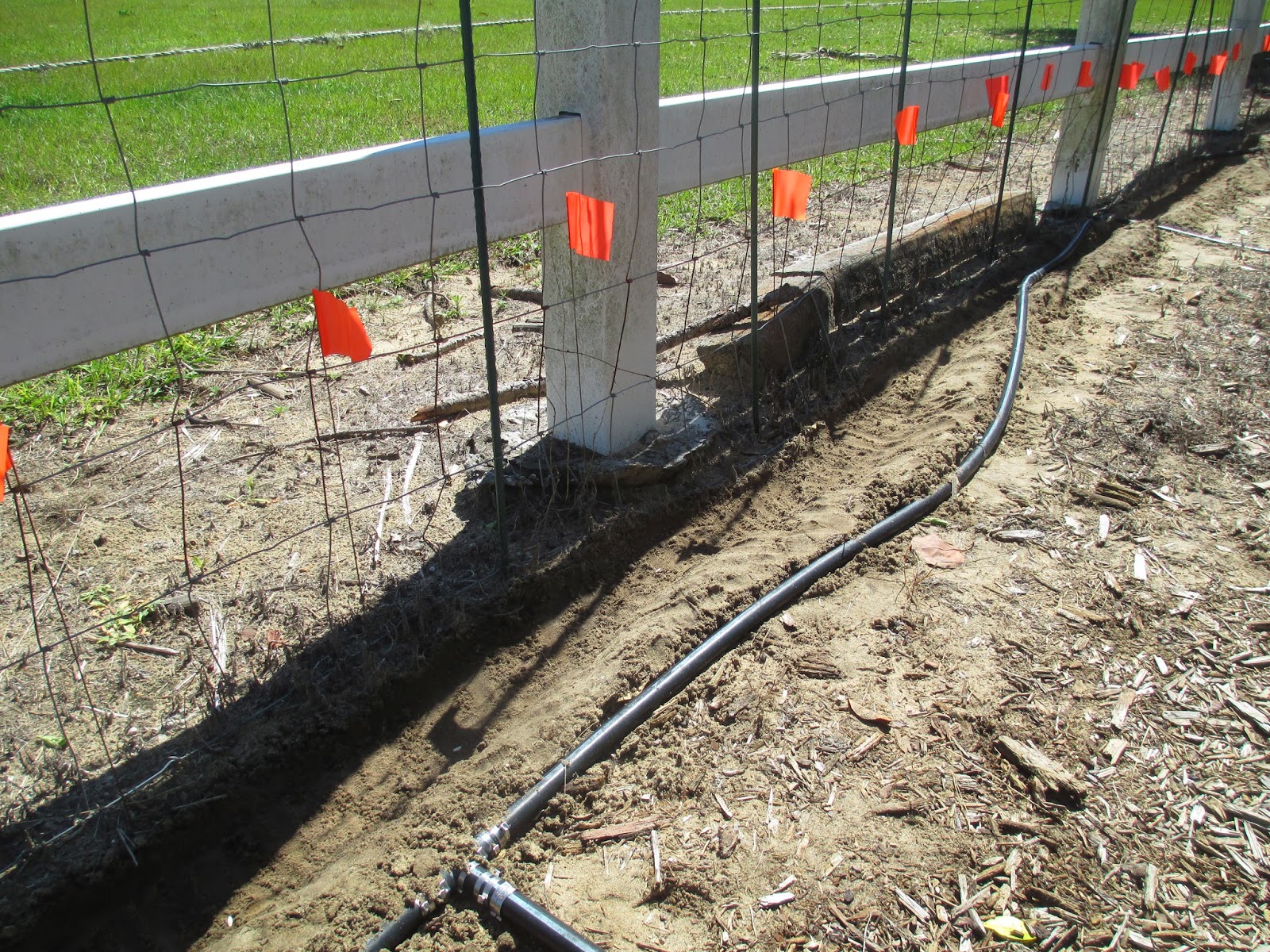








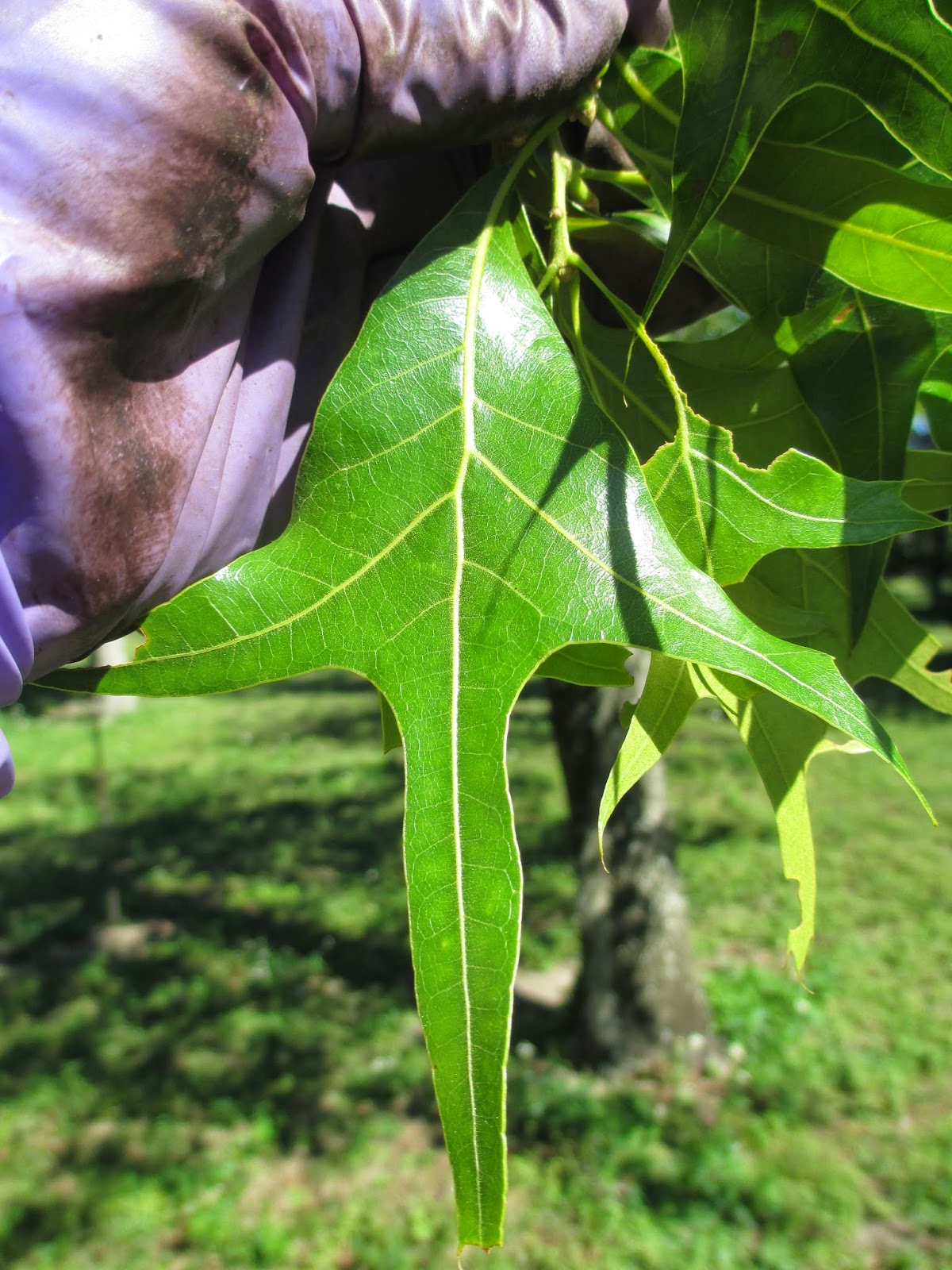






































































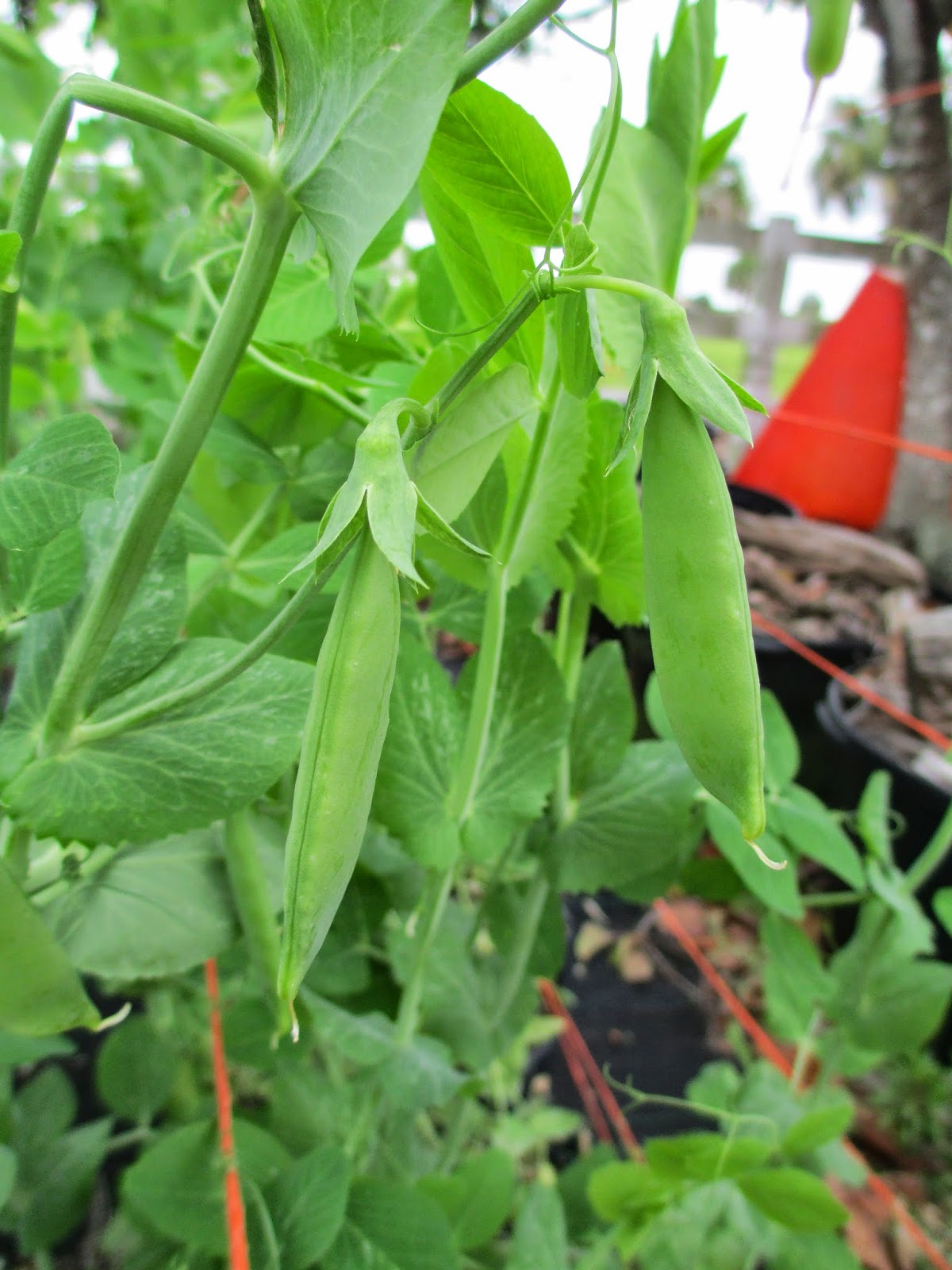












































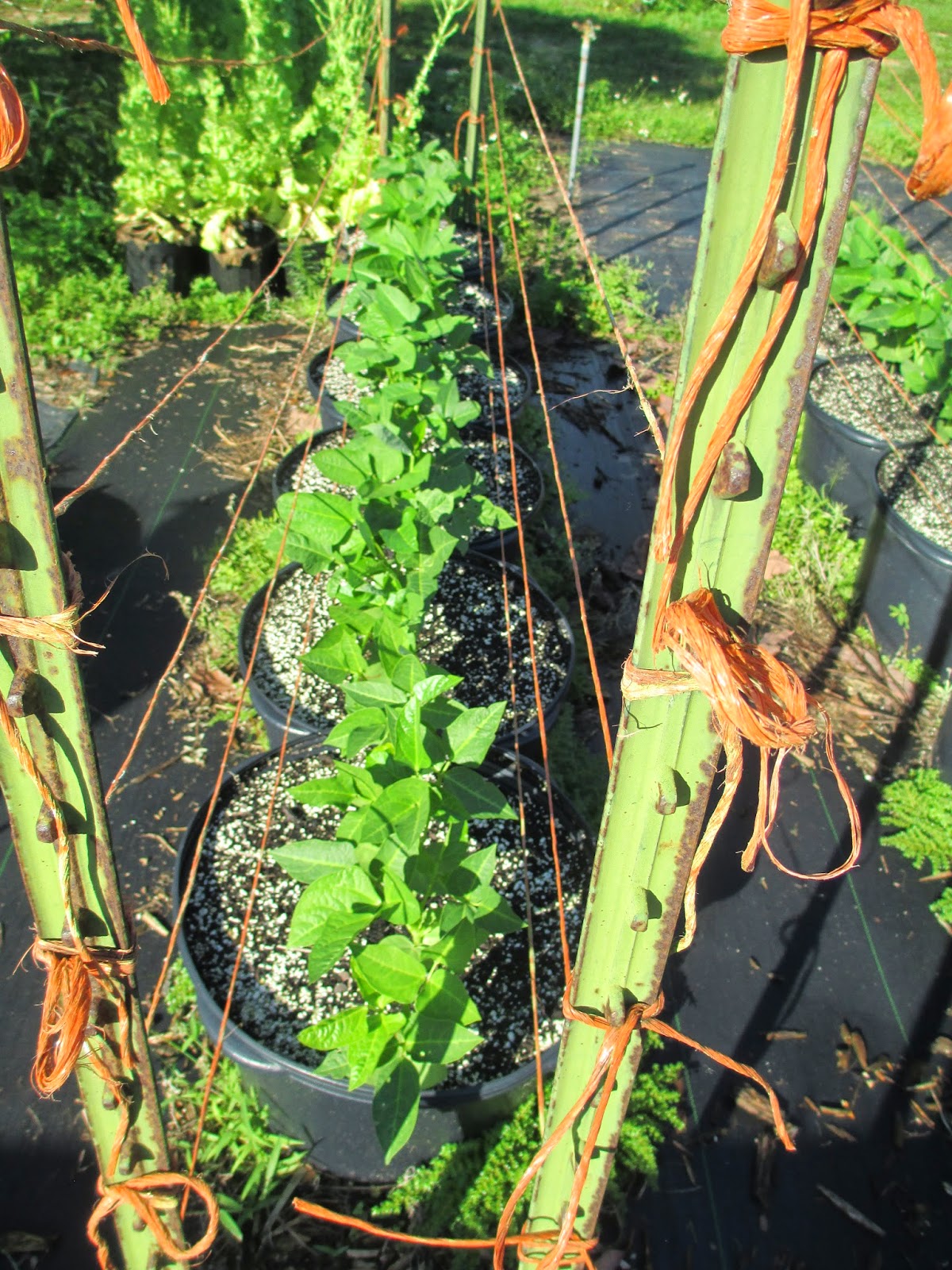
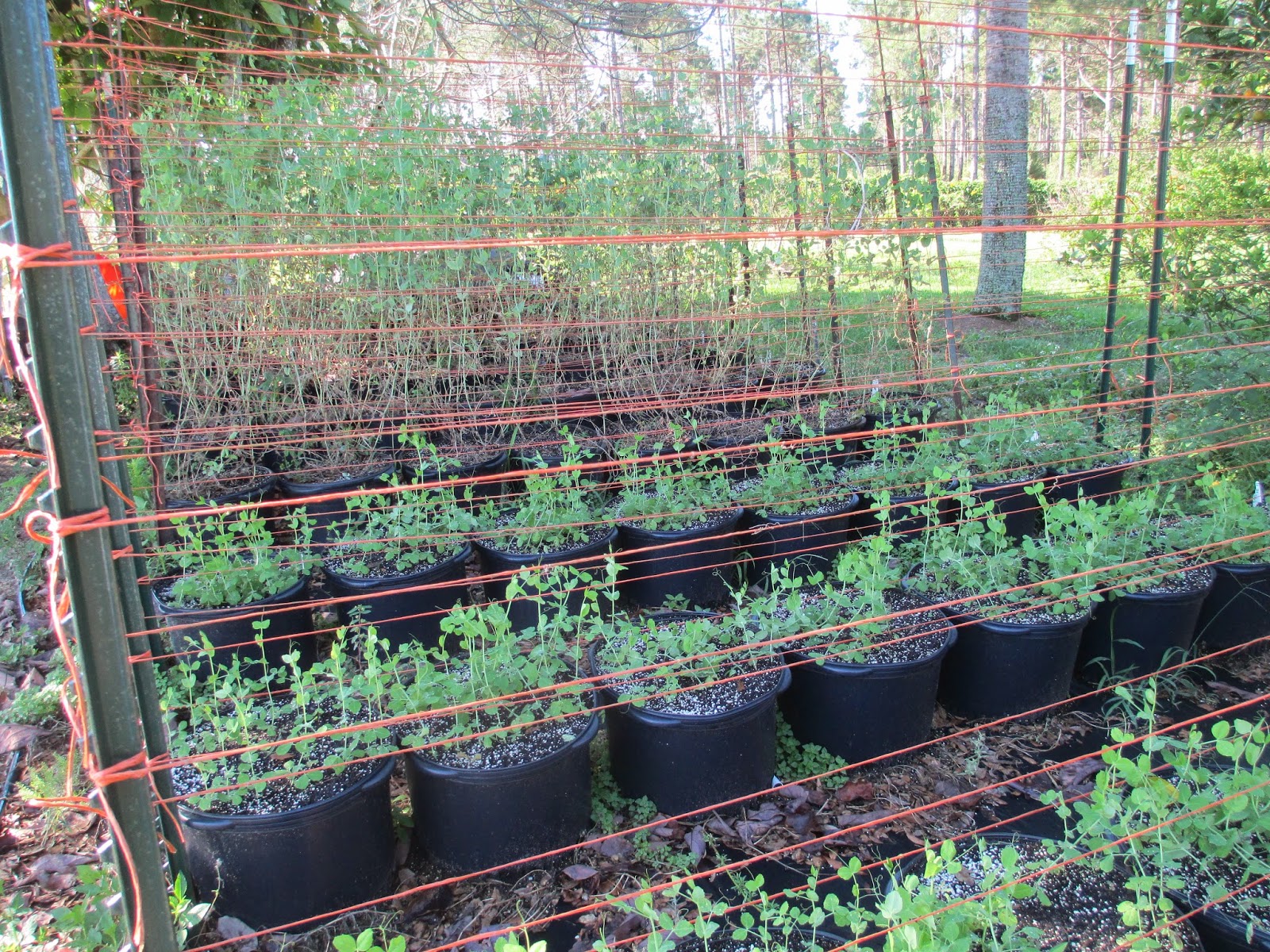



























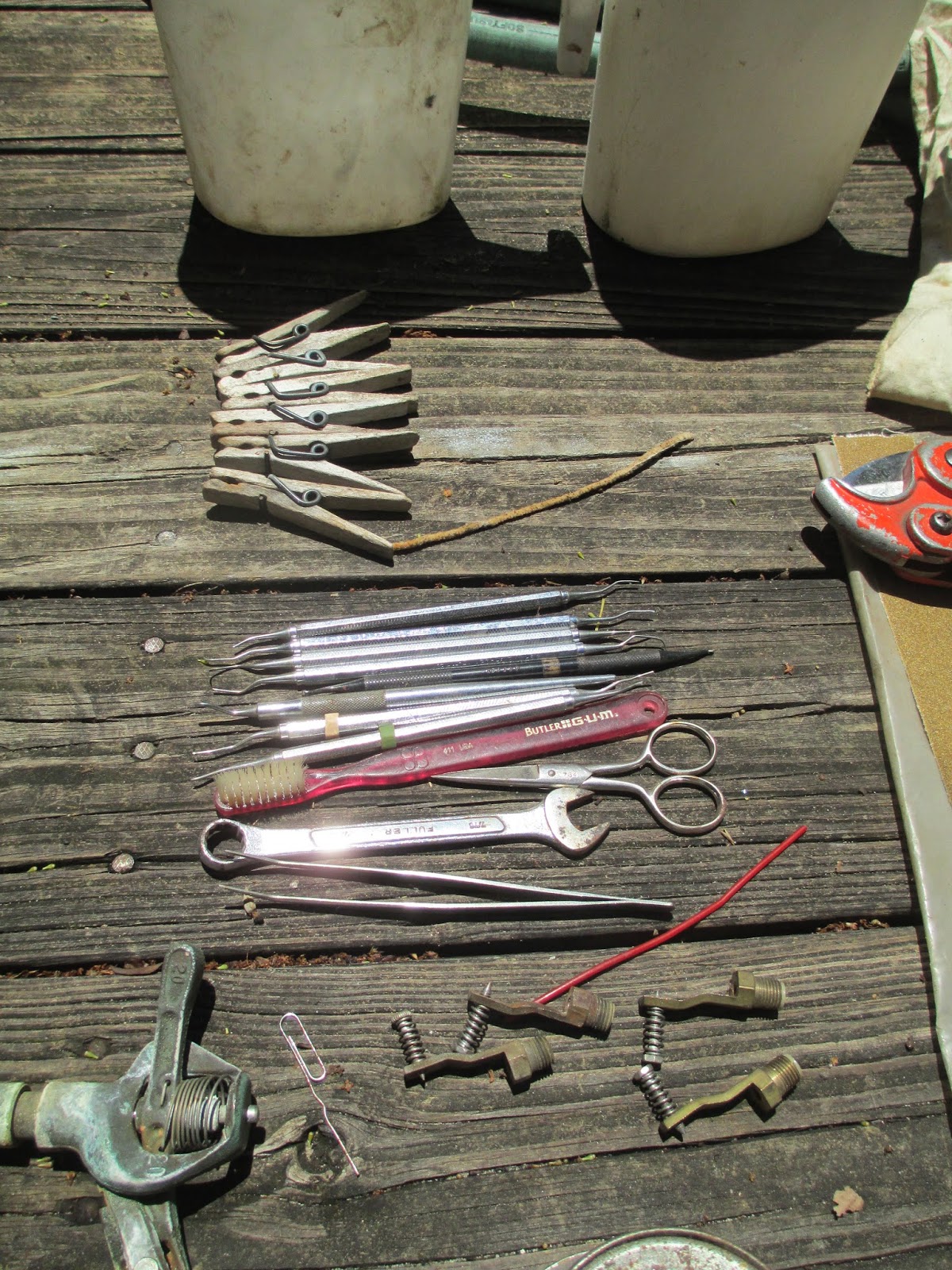























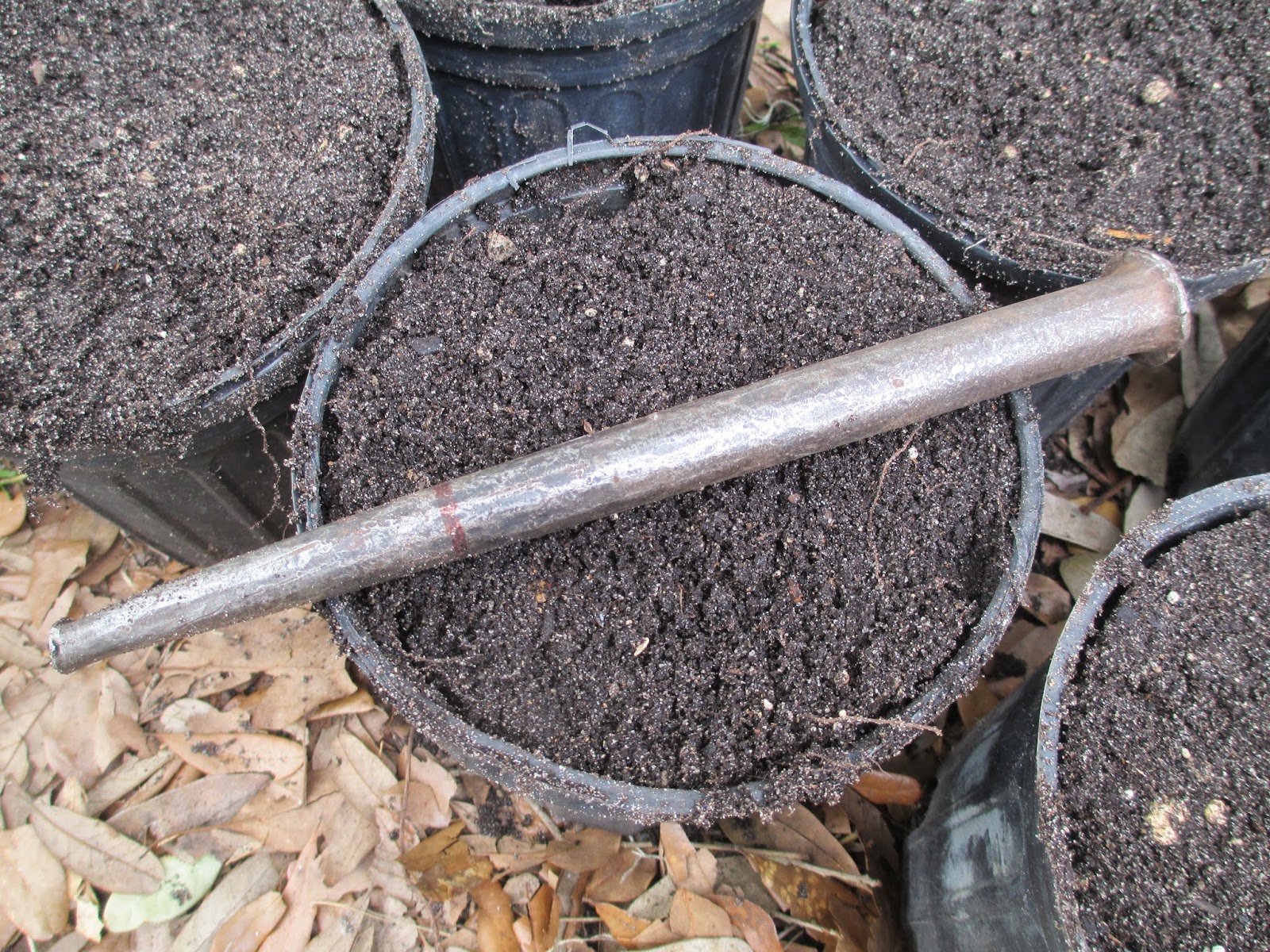















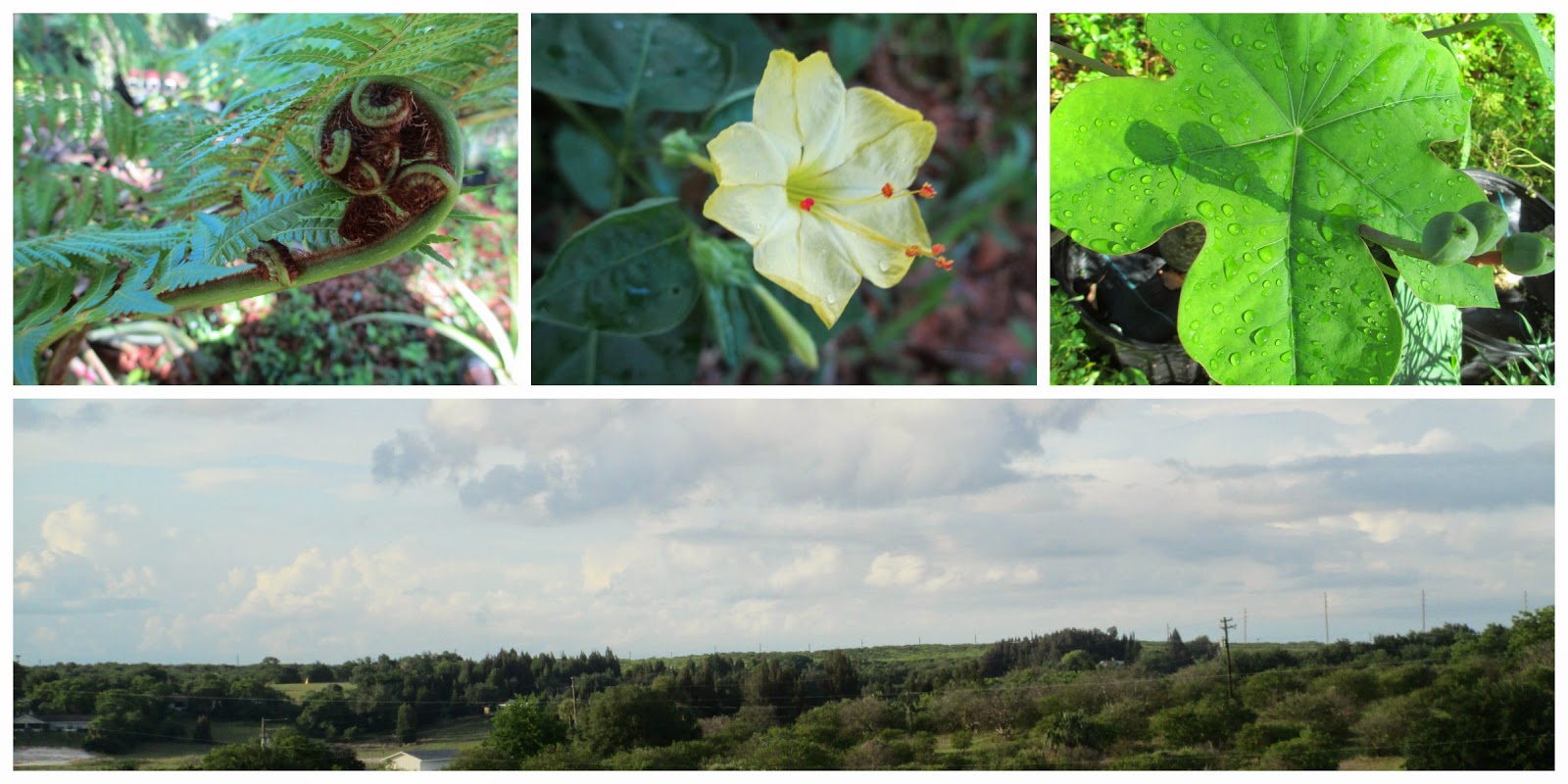












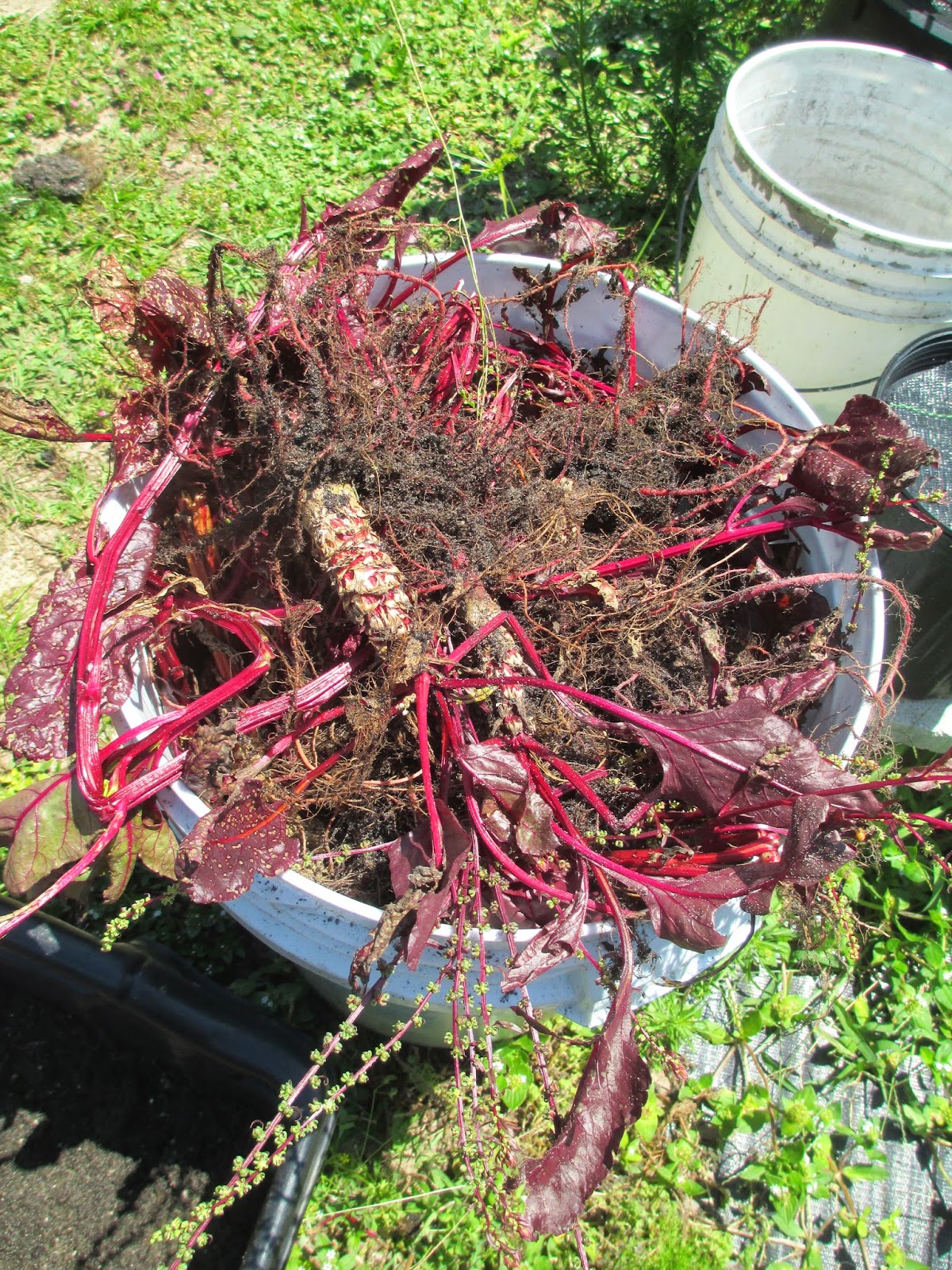
























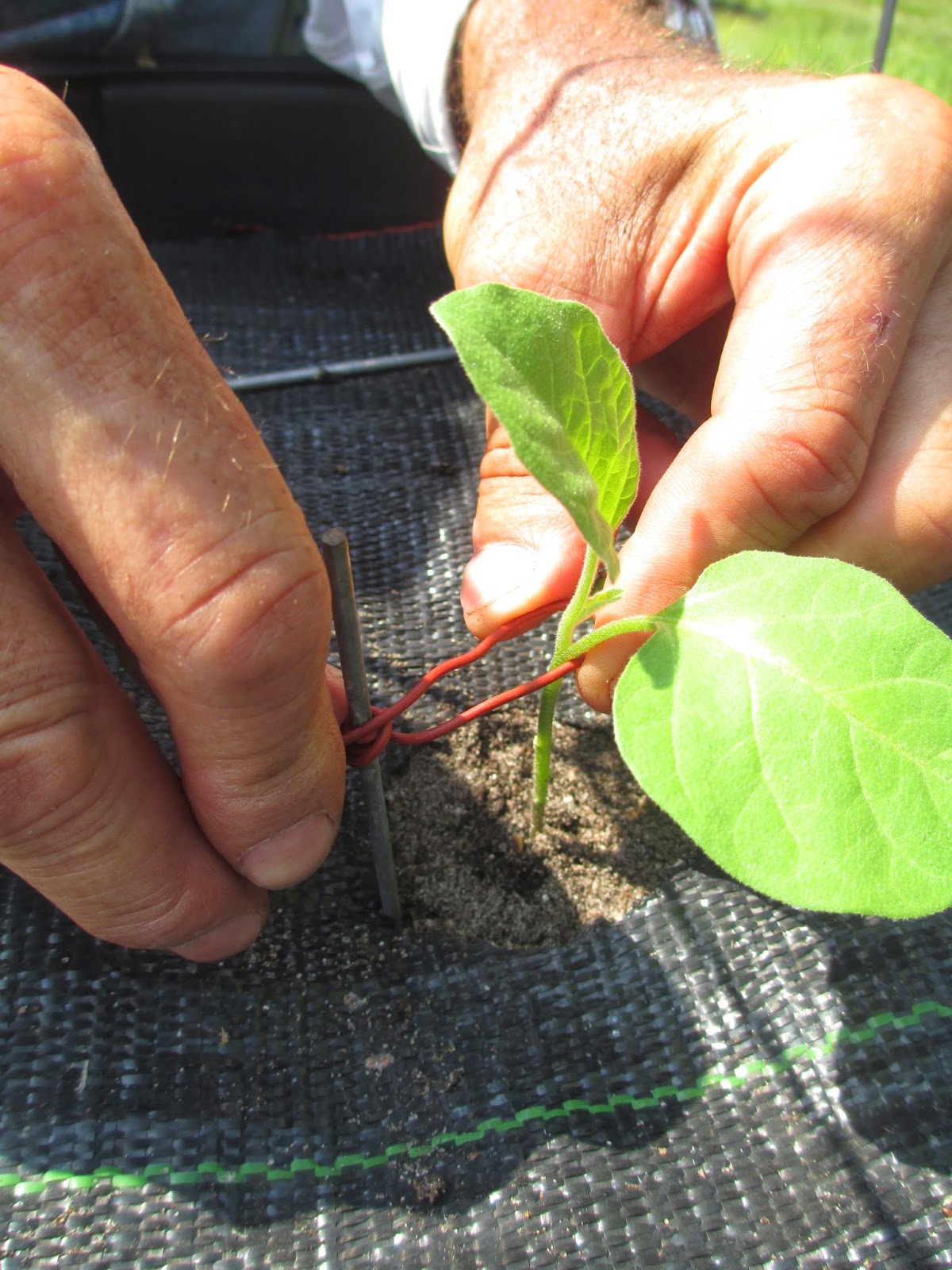



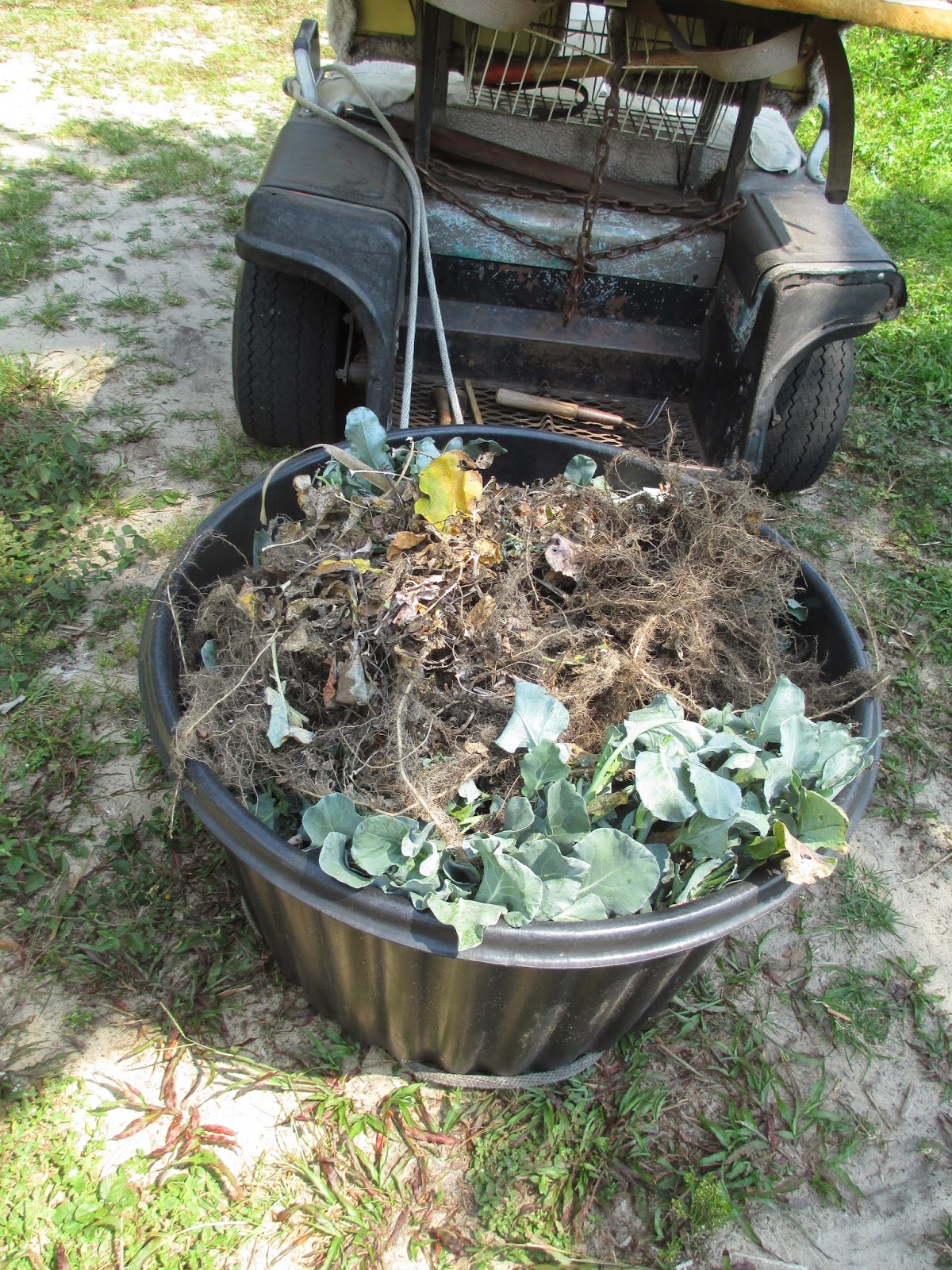



































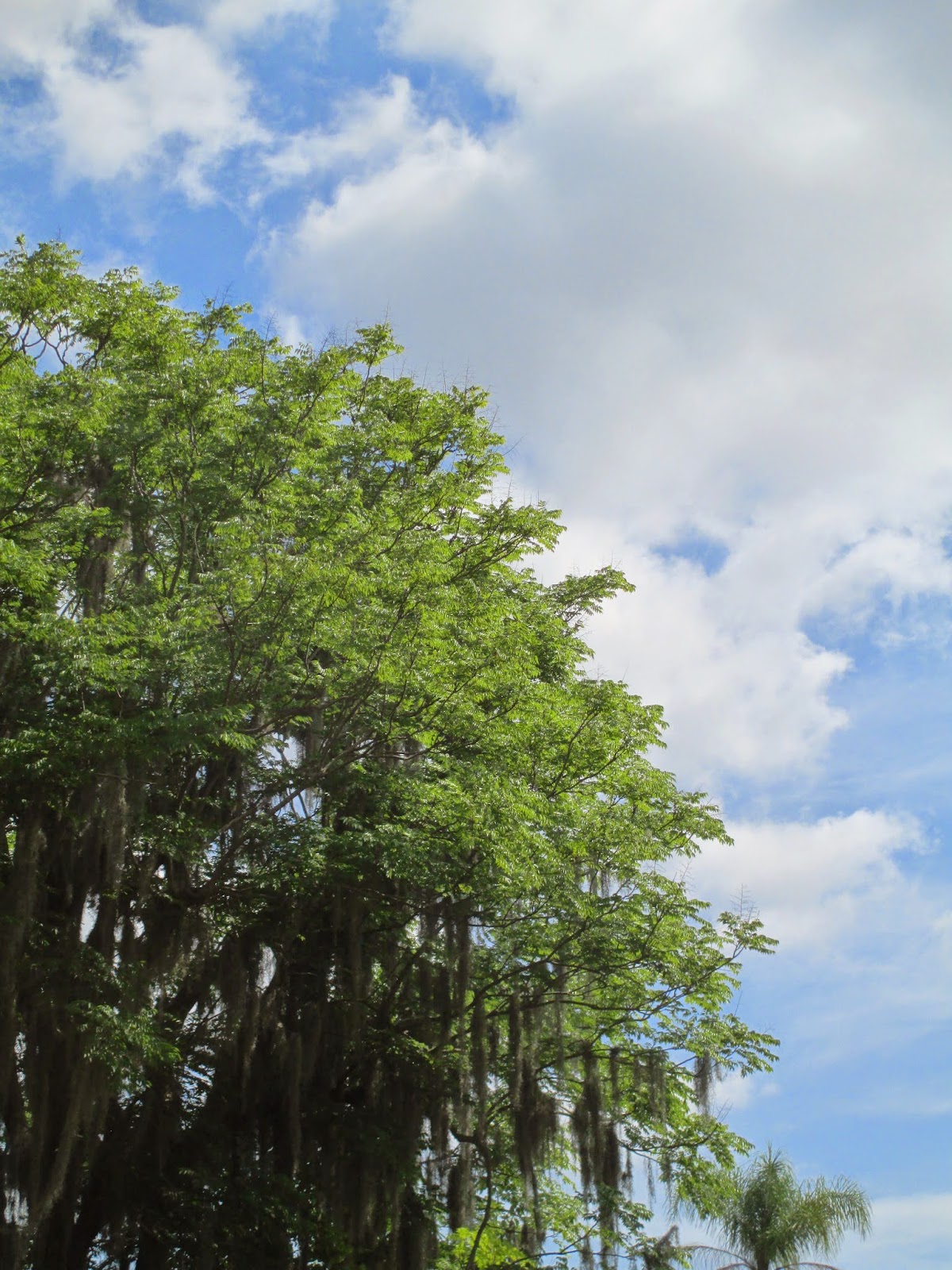
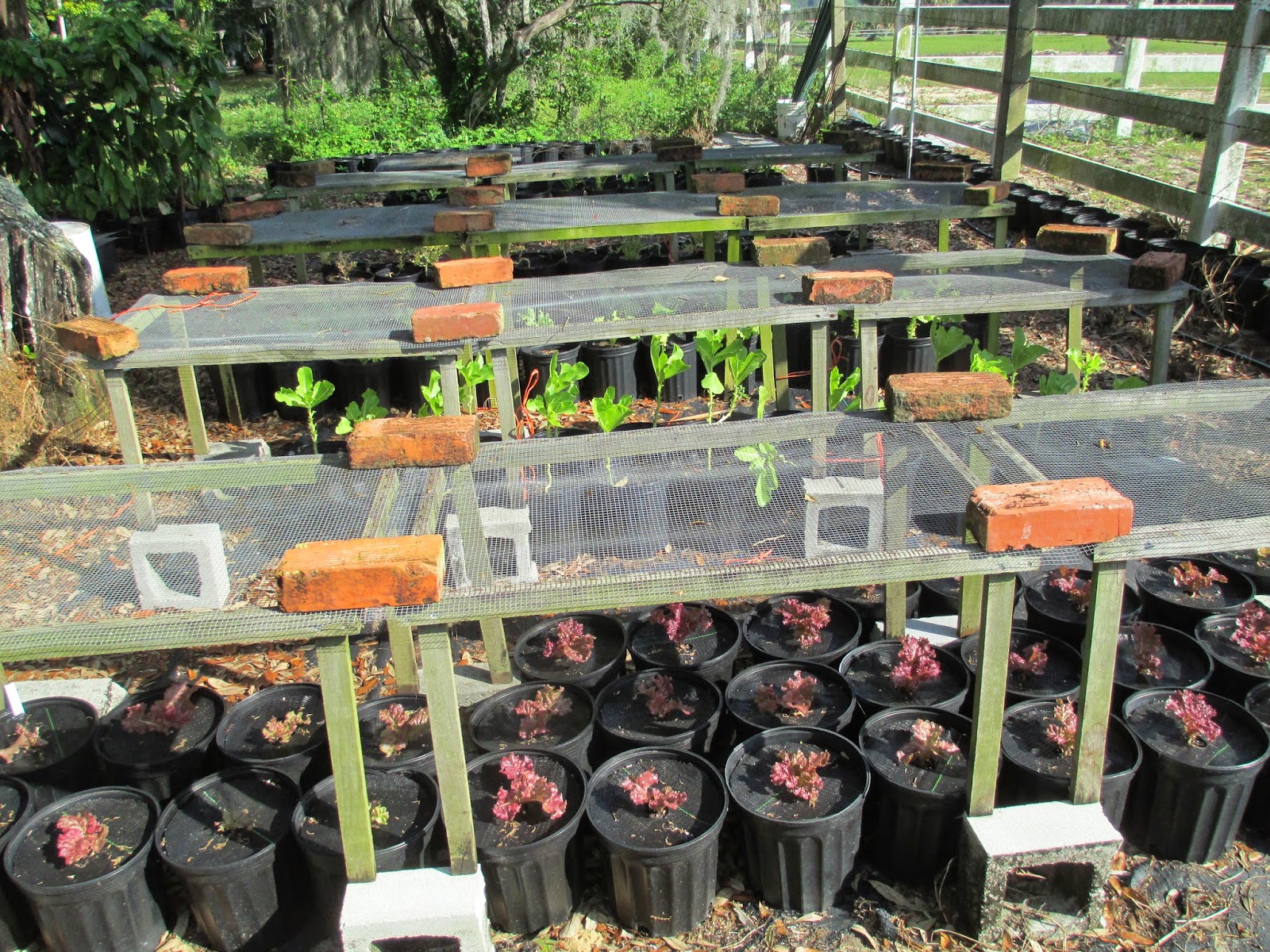
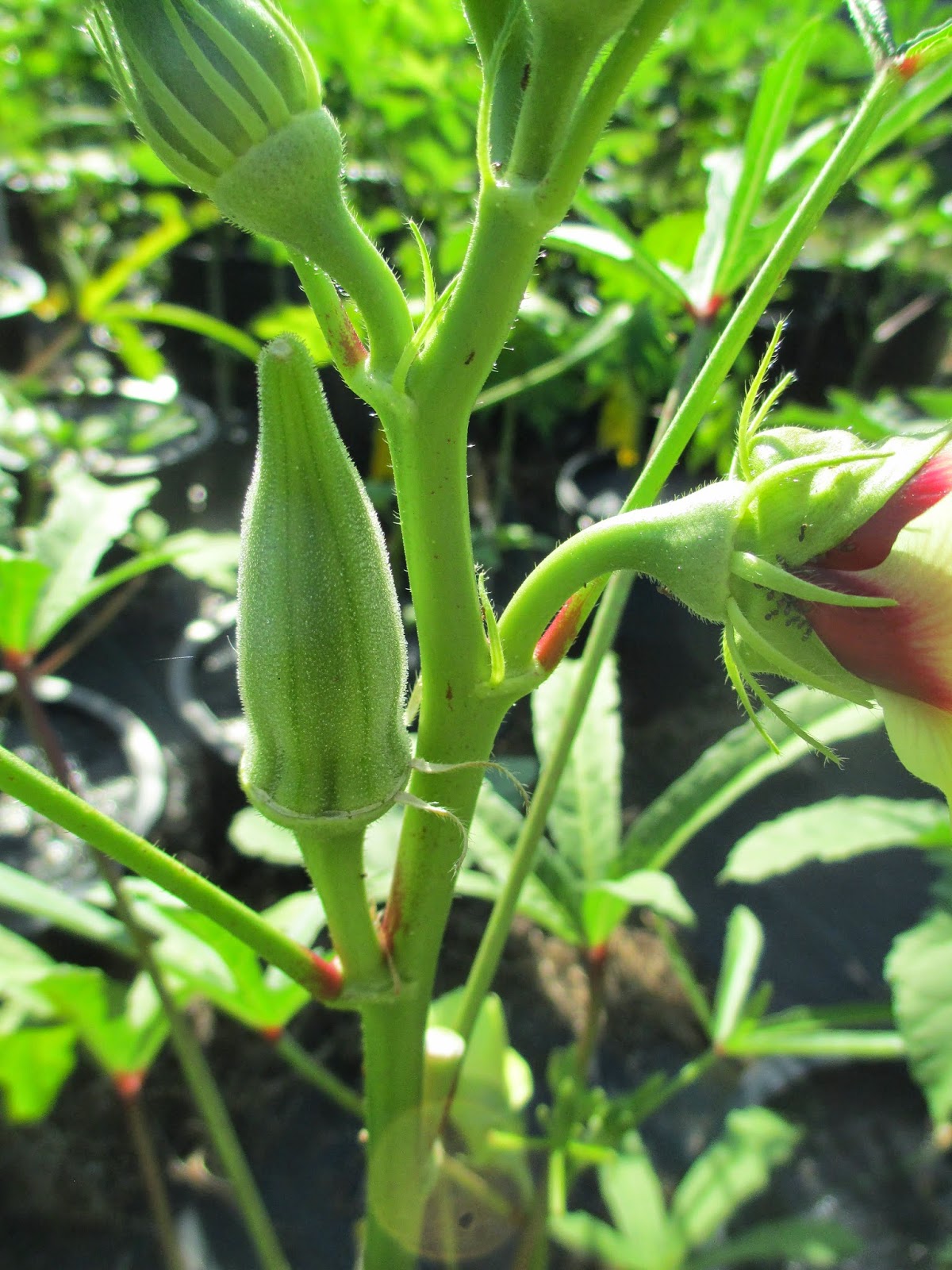























No comments:
Post a Comment
Thanks for taking the time to leave your thoughts!